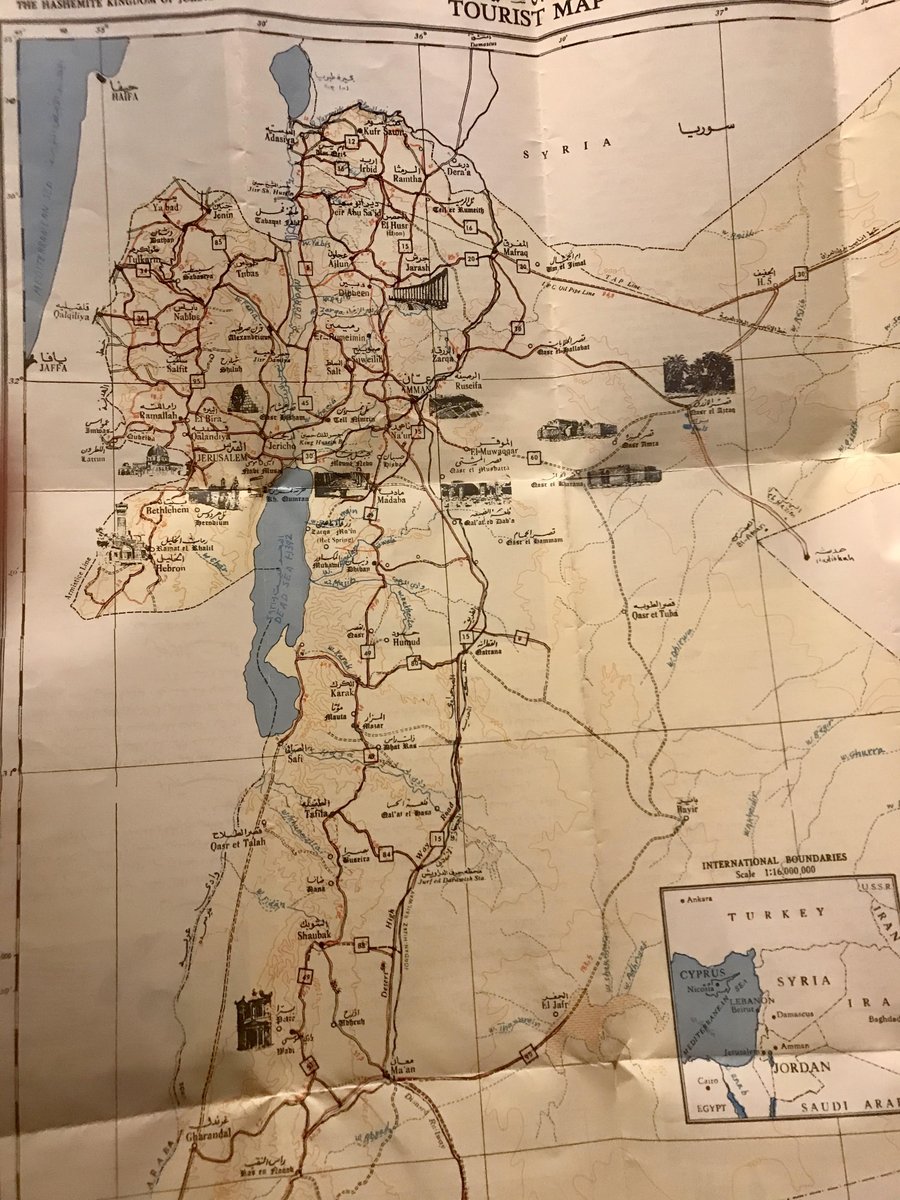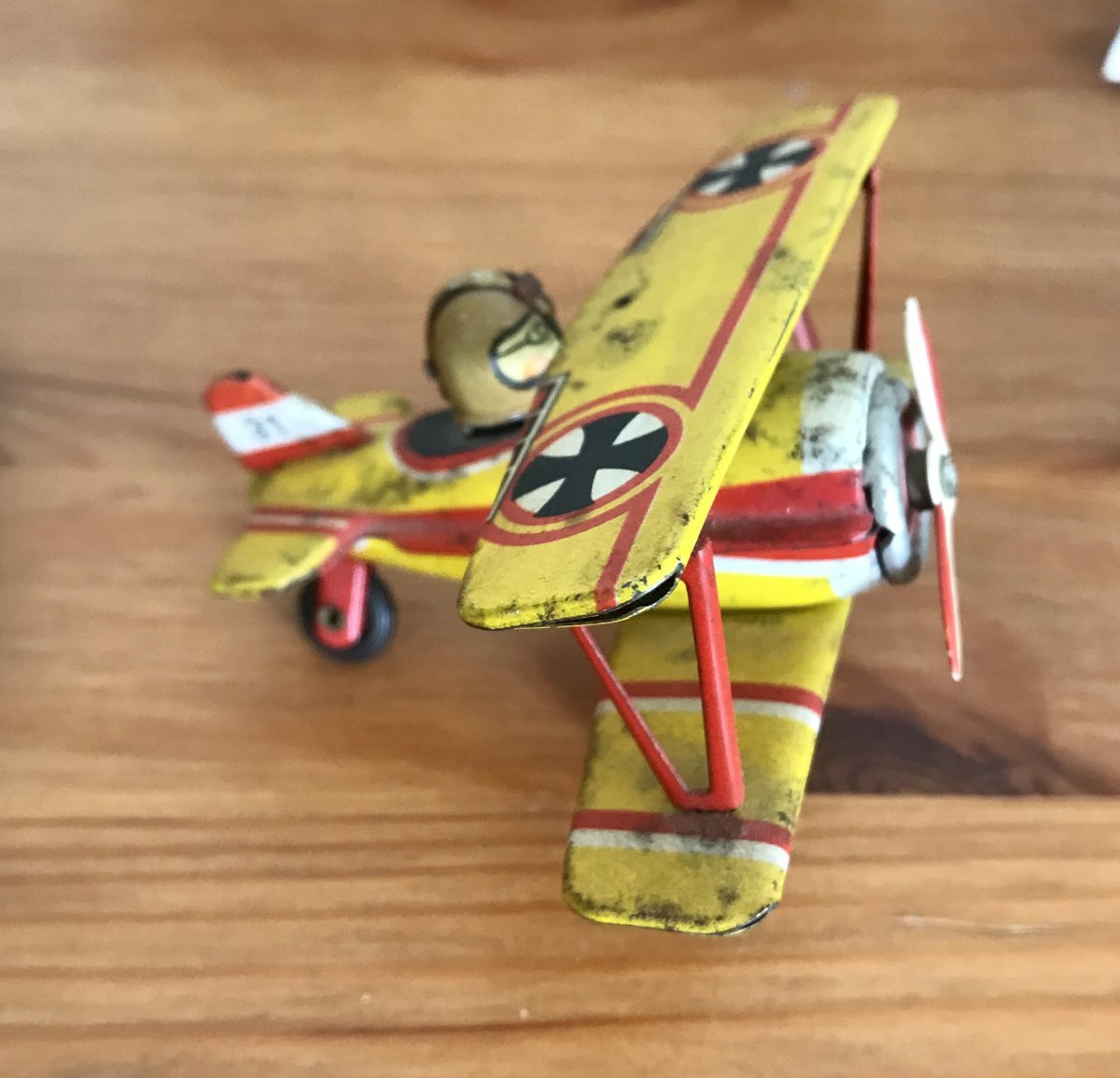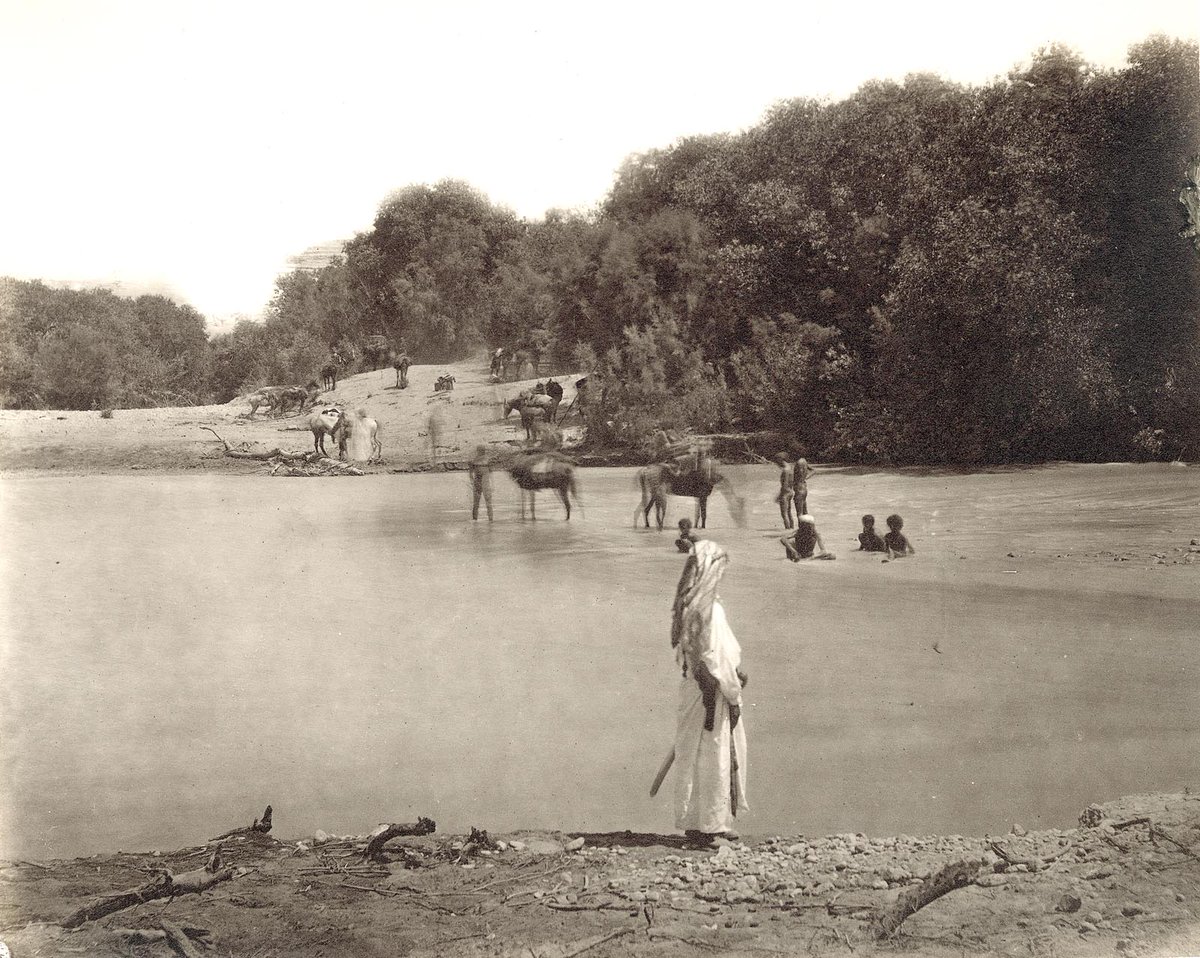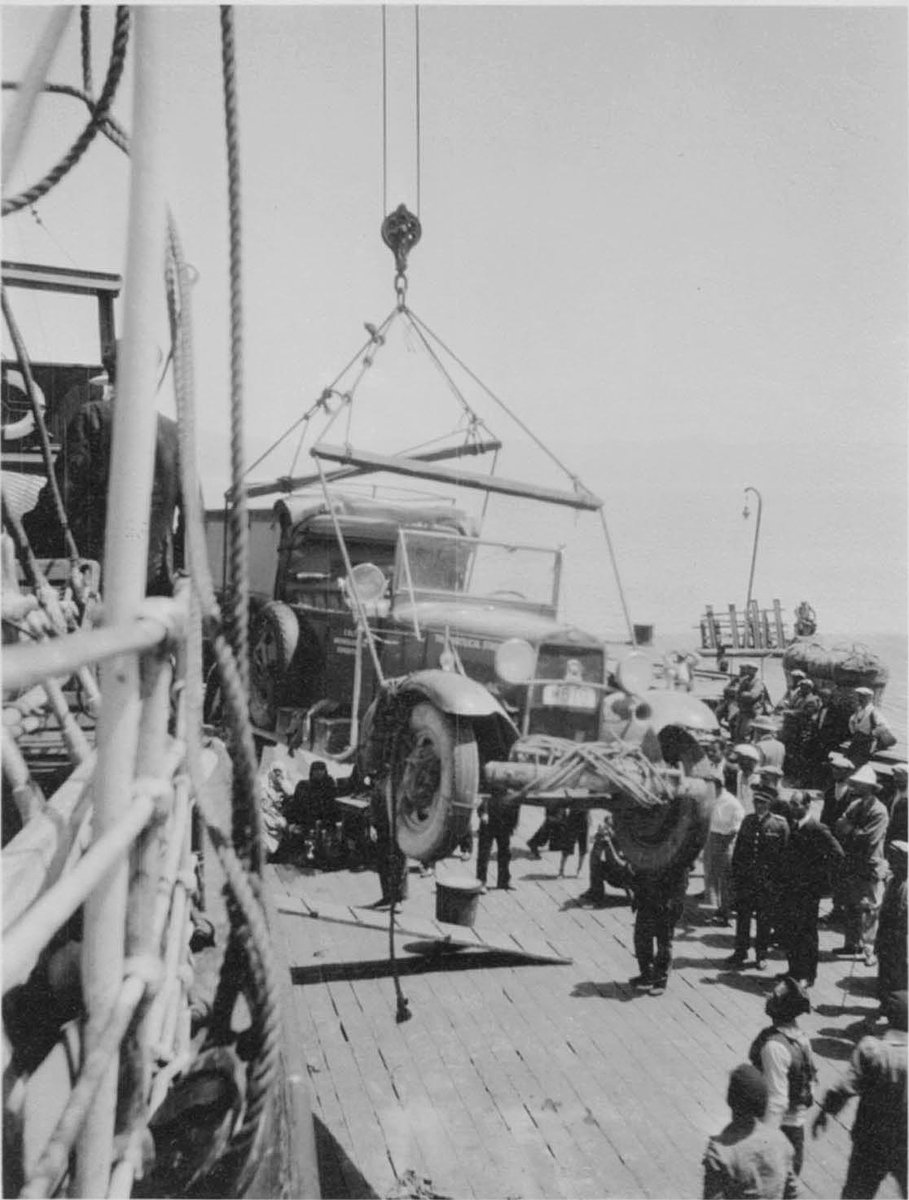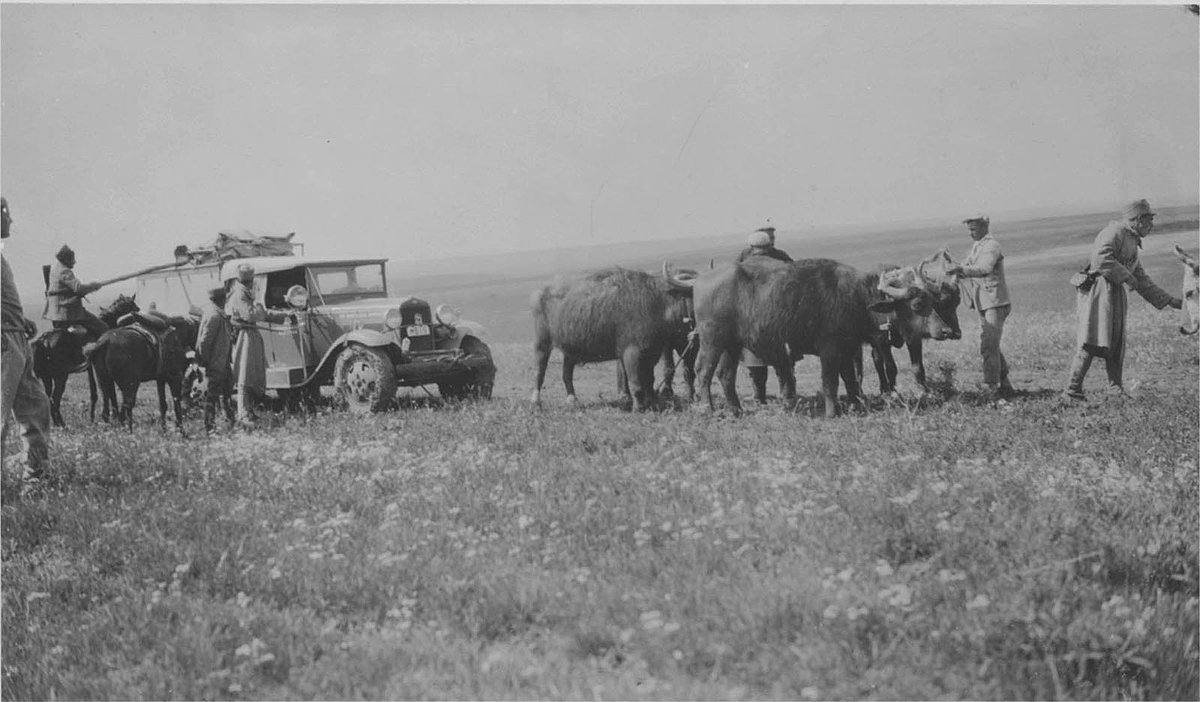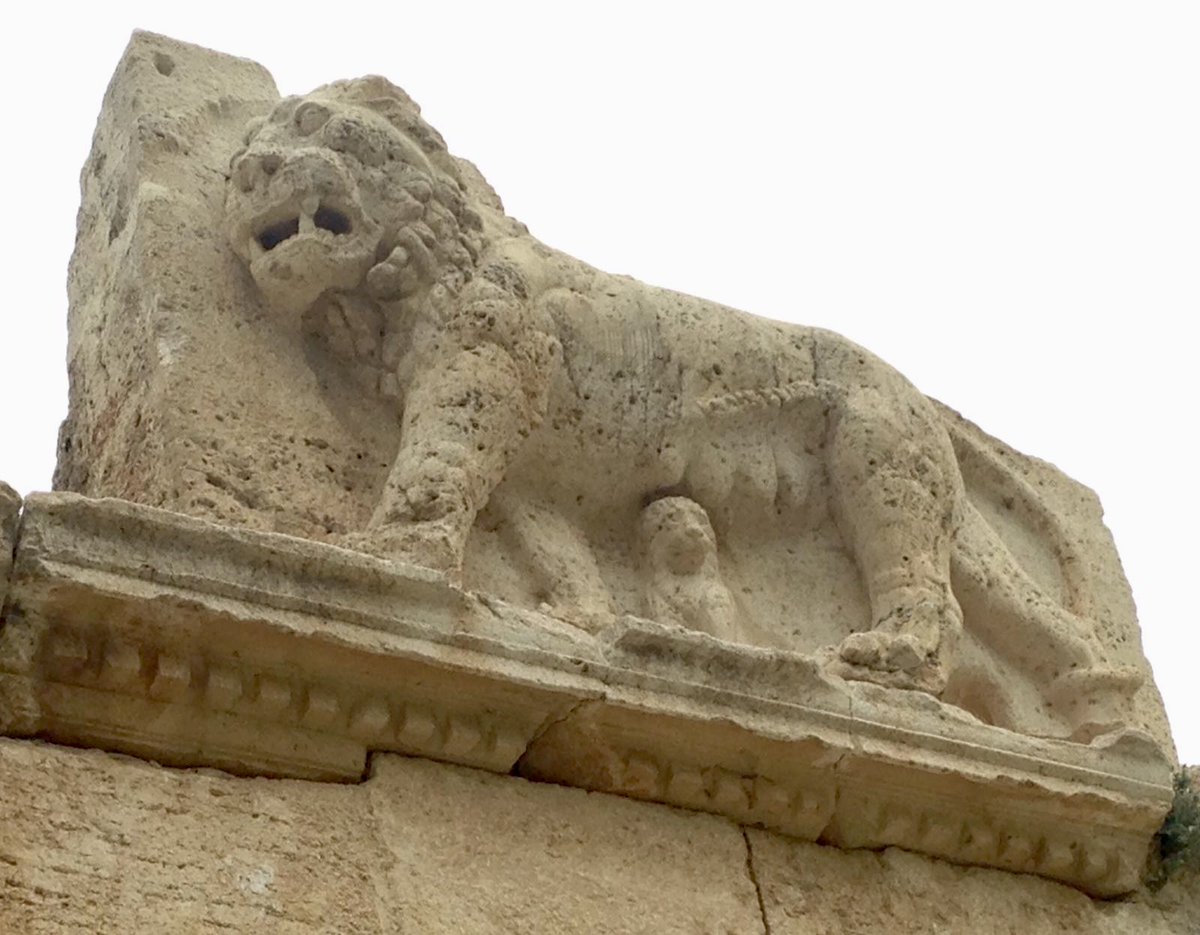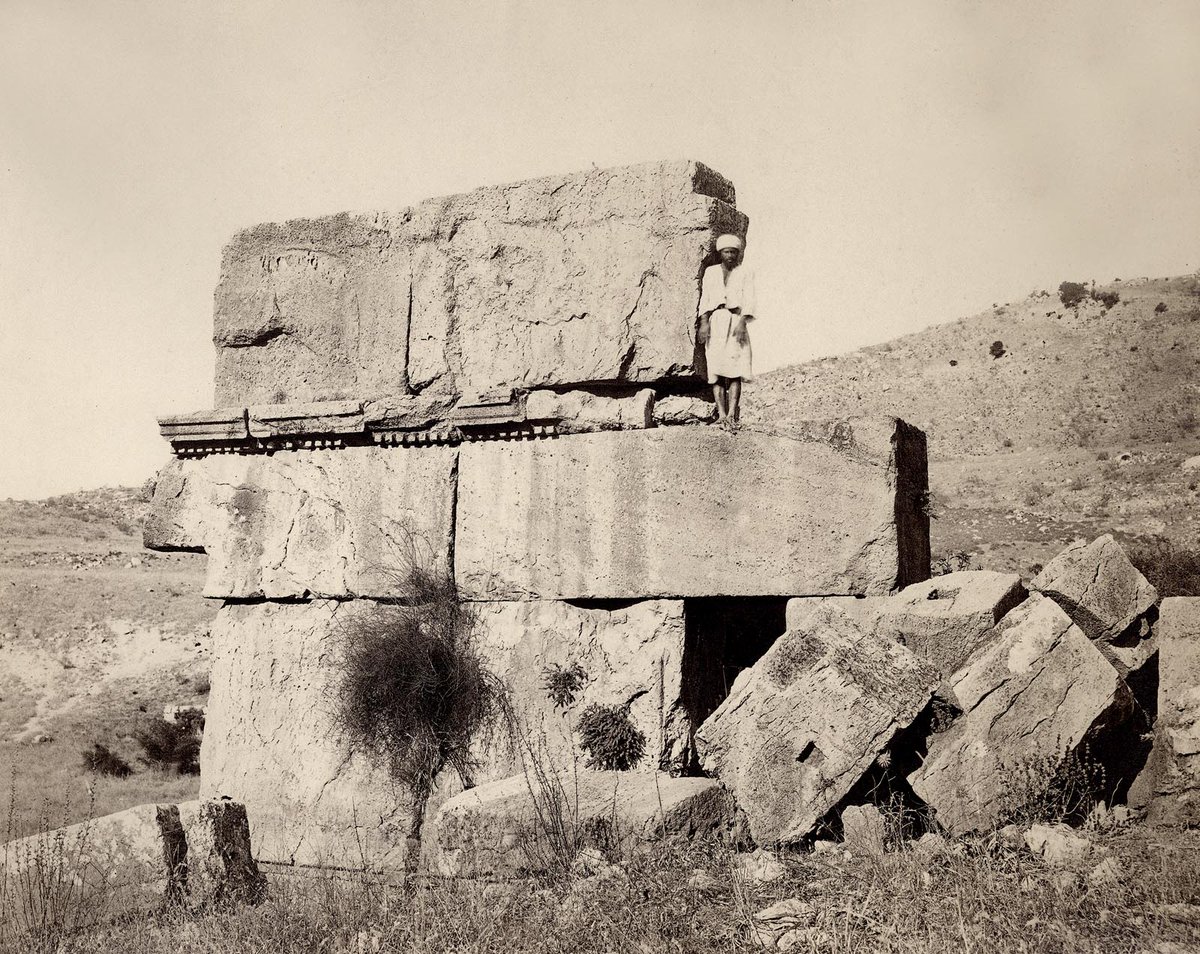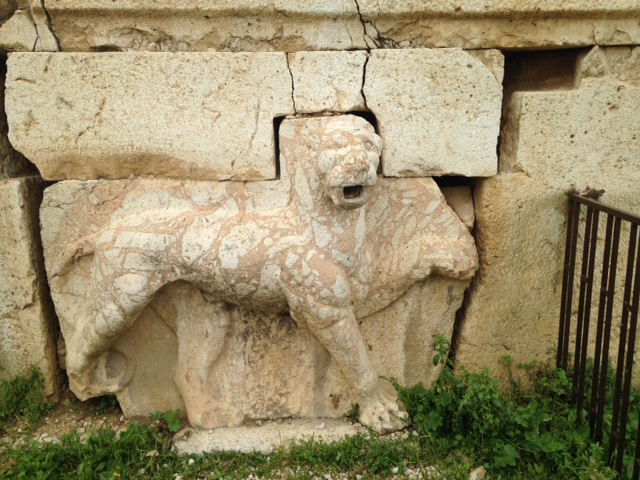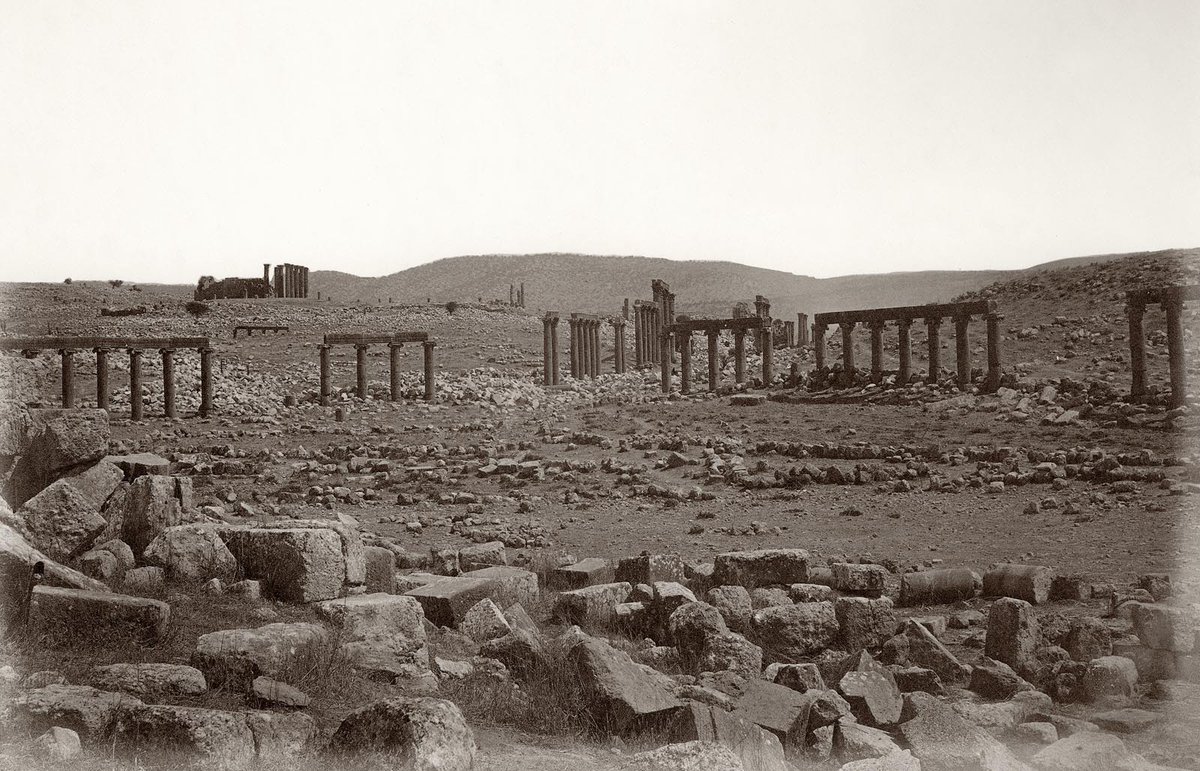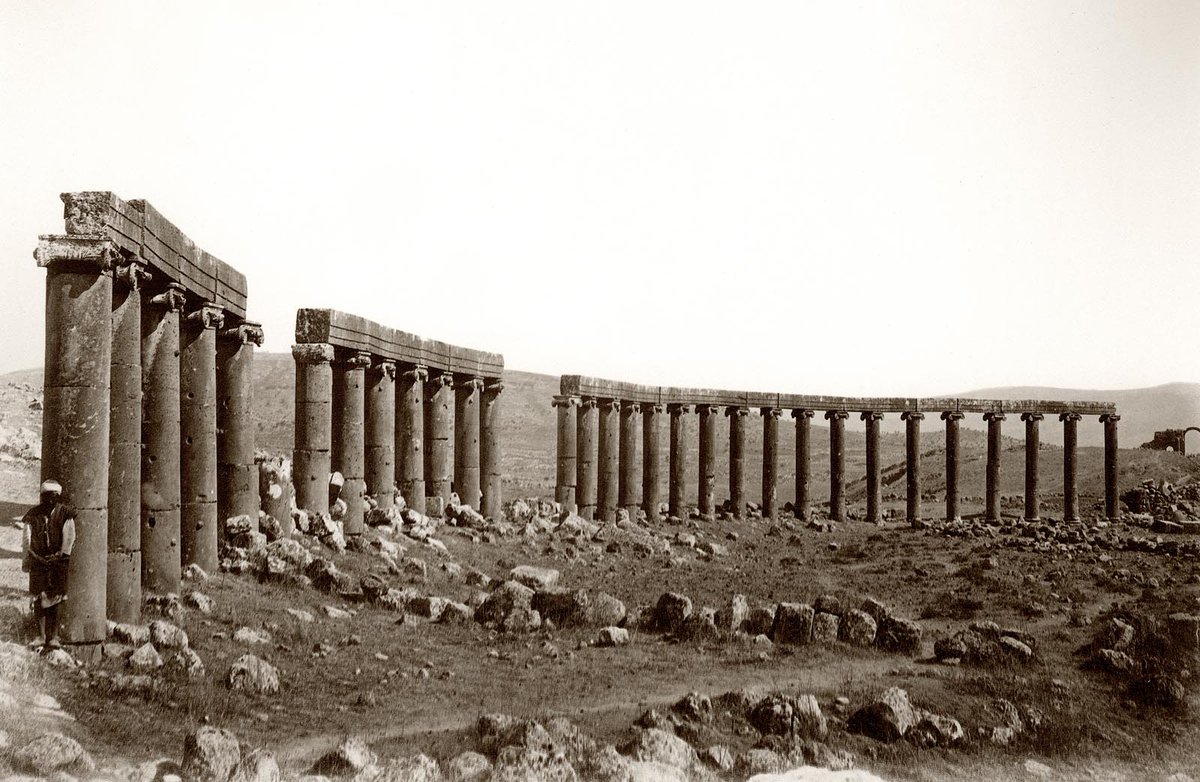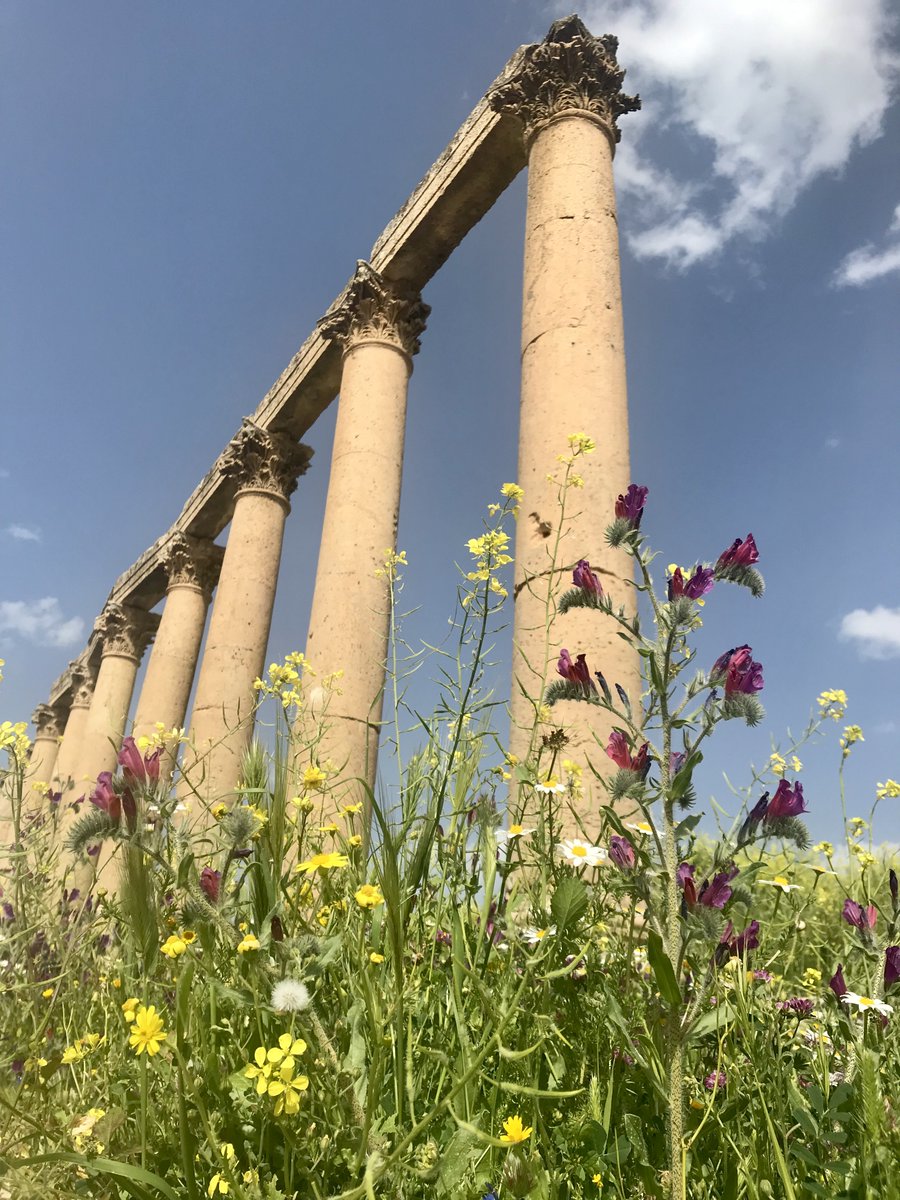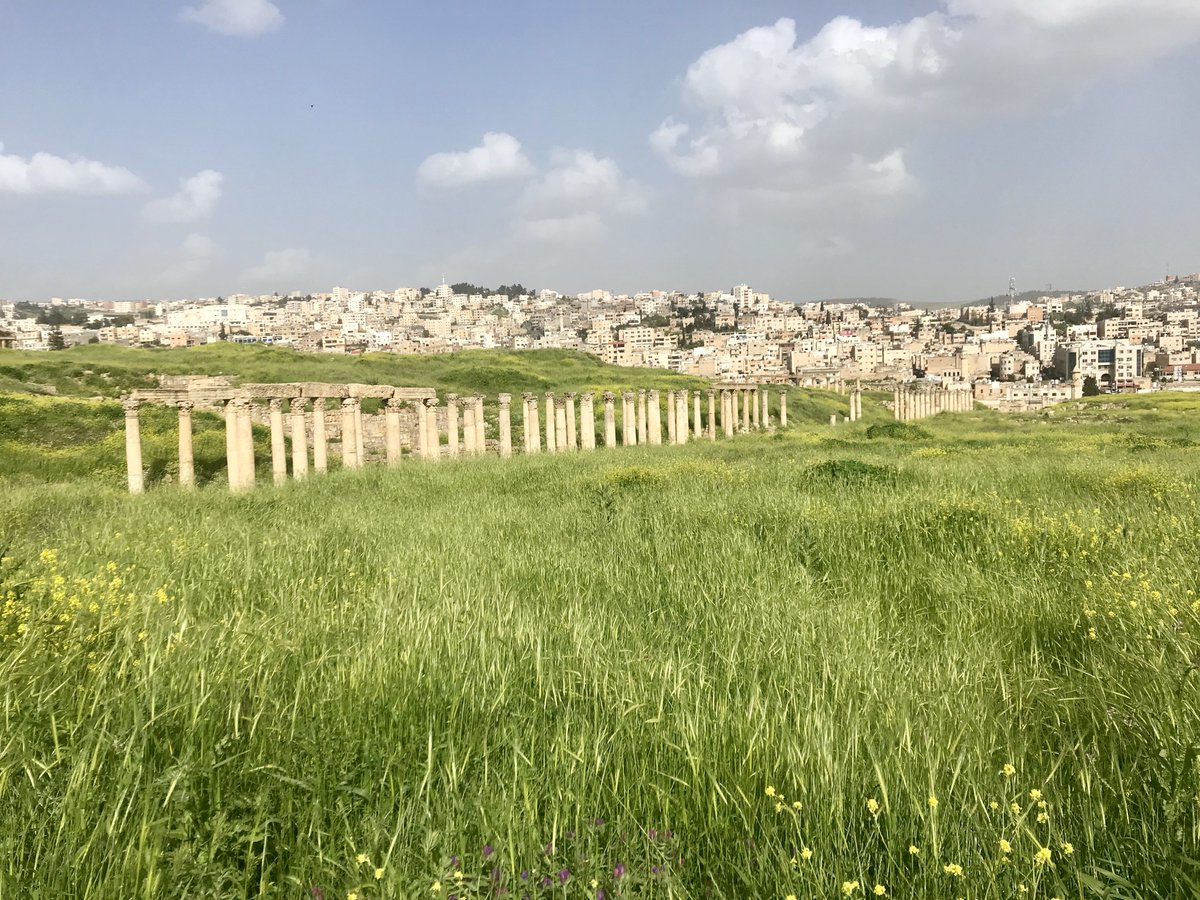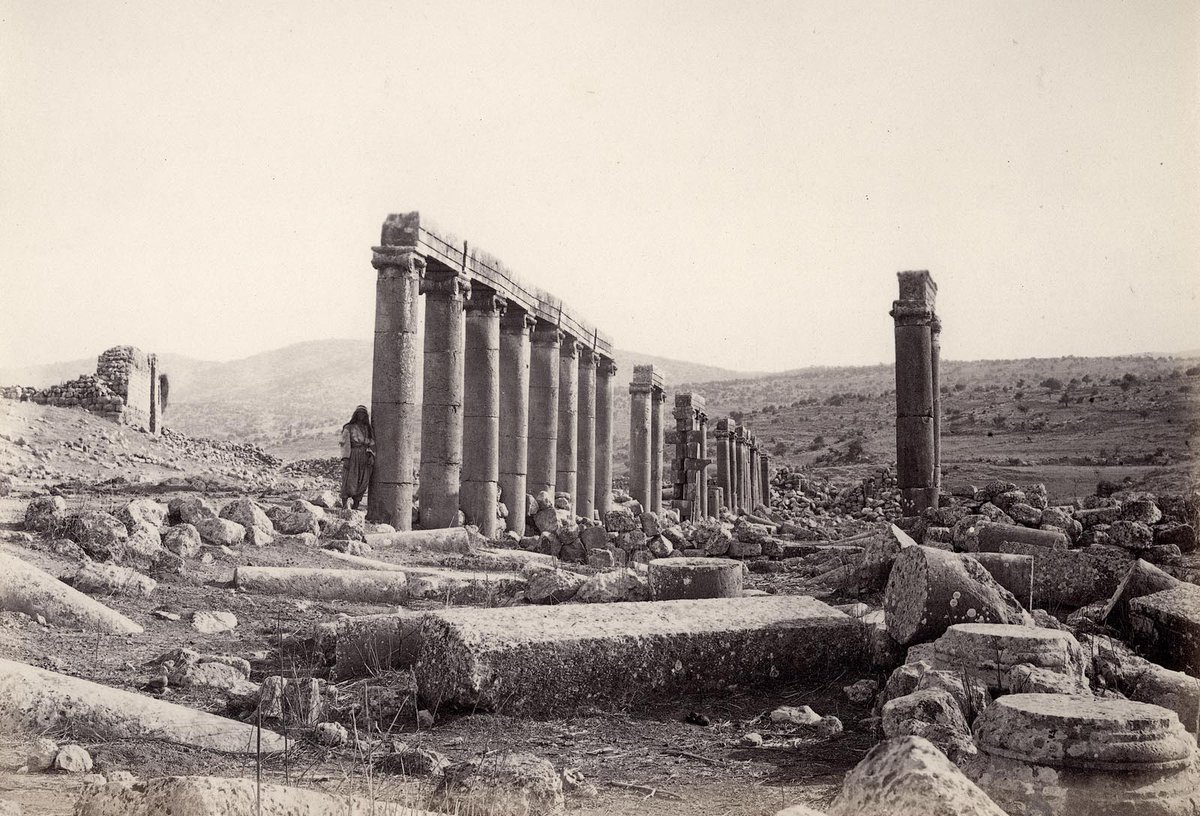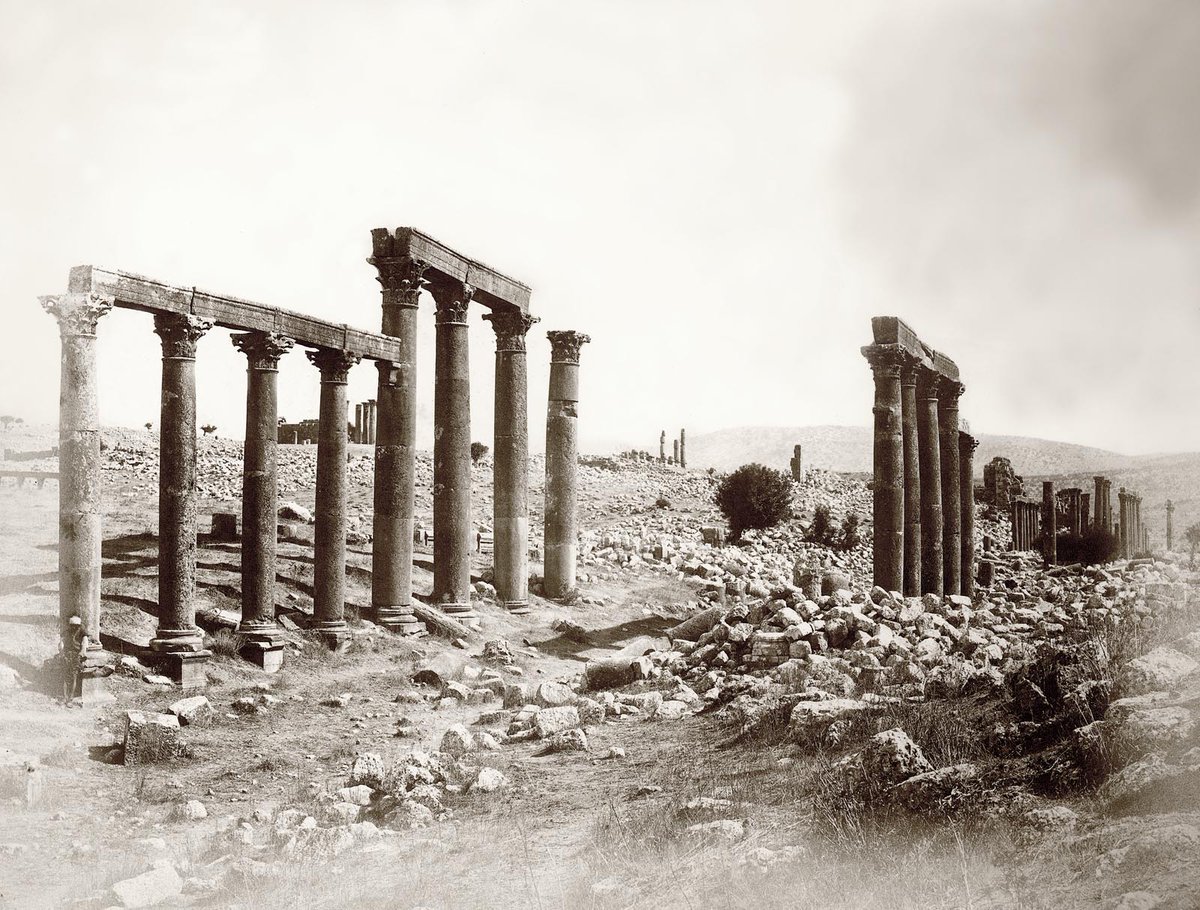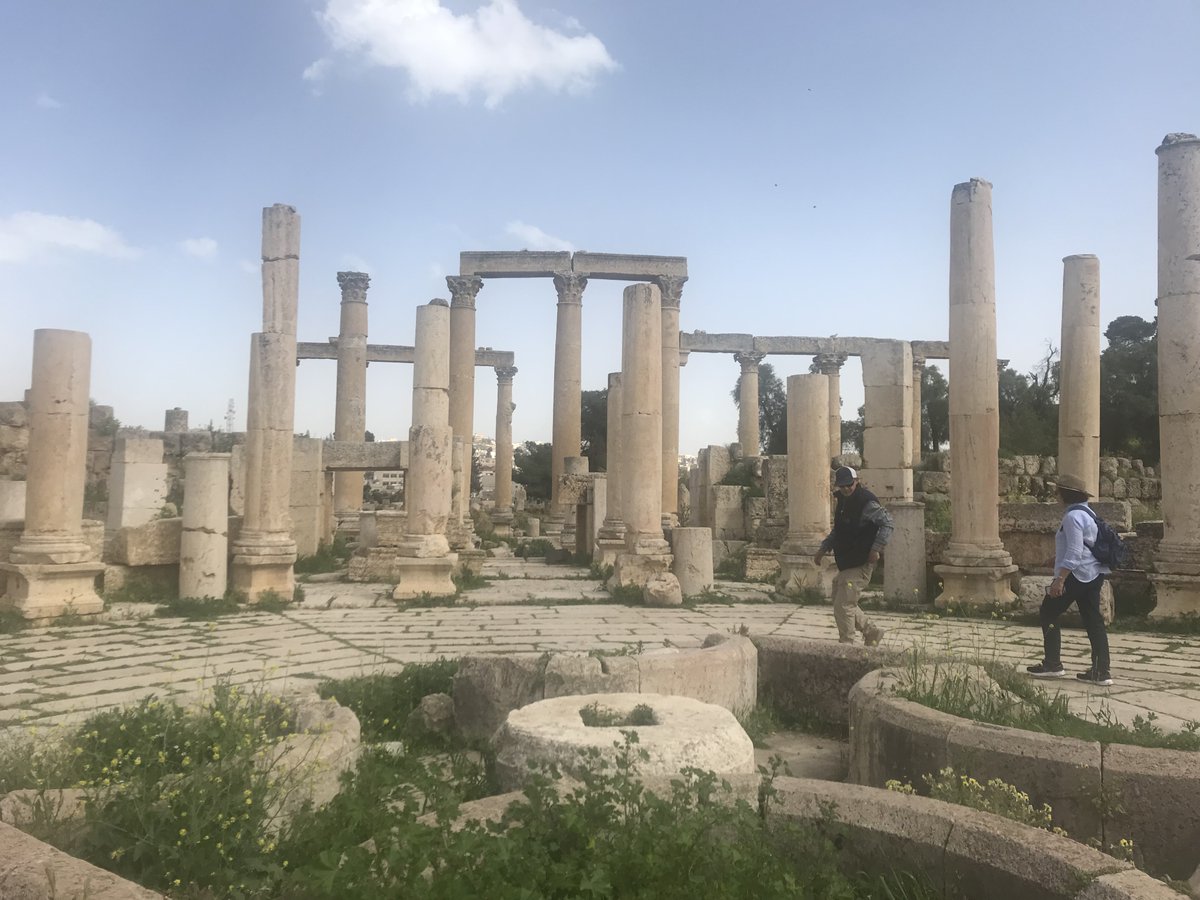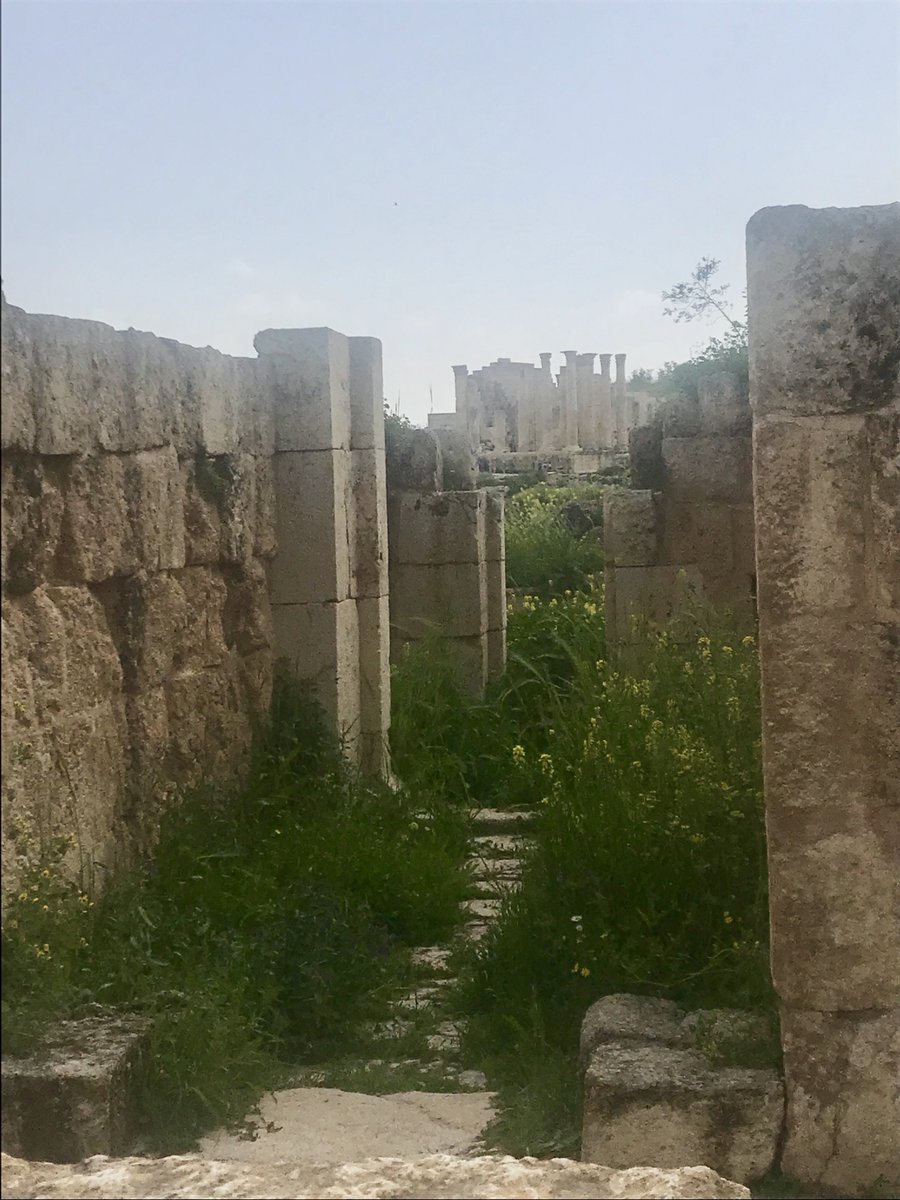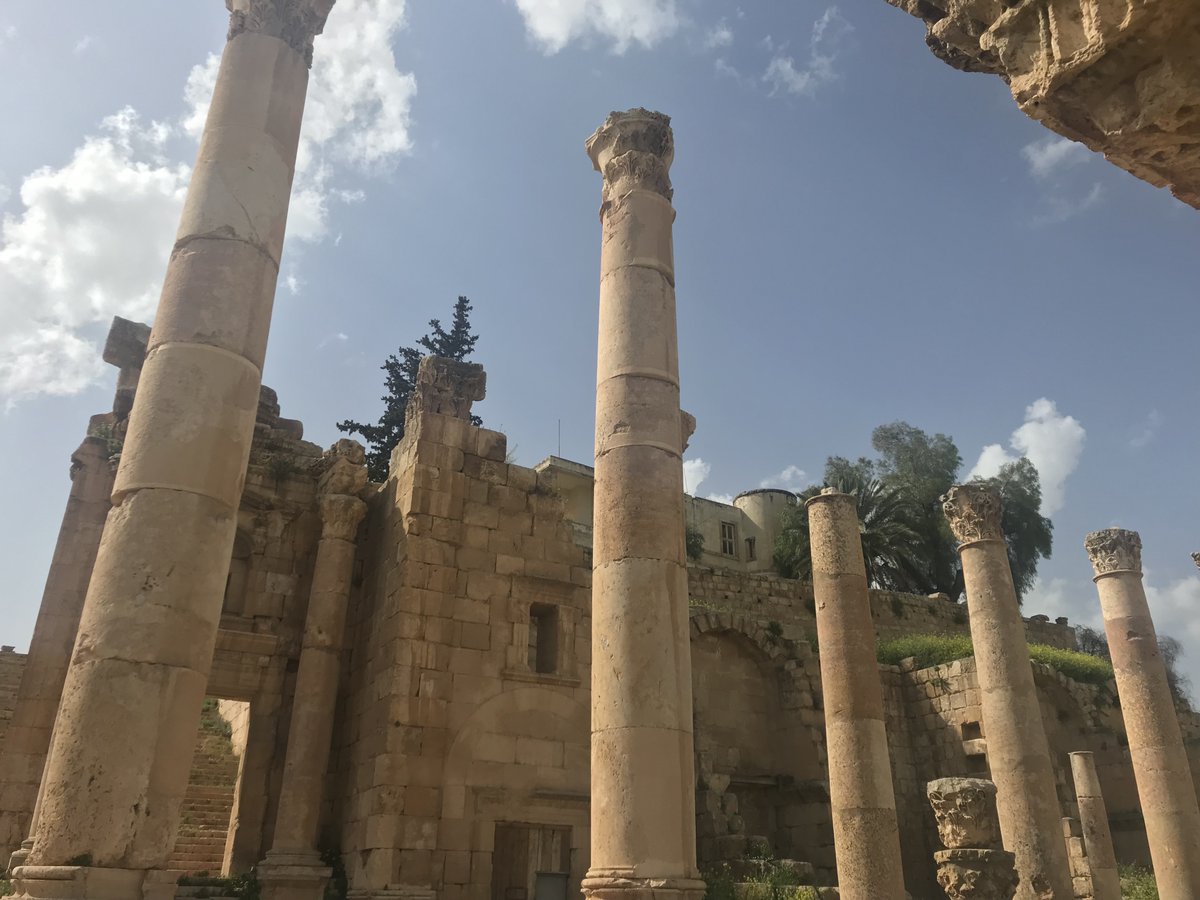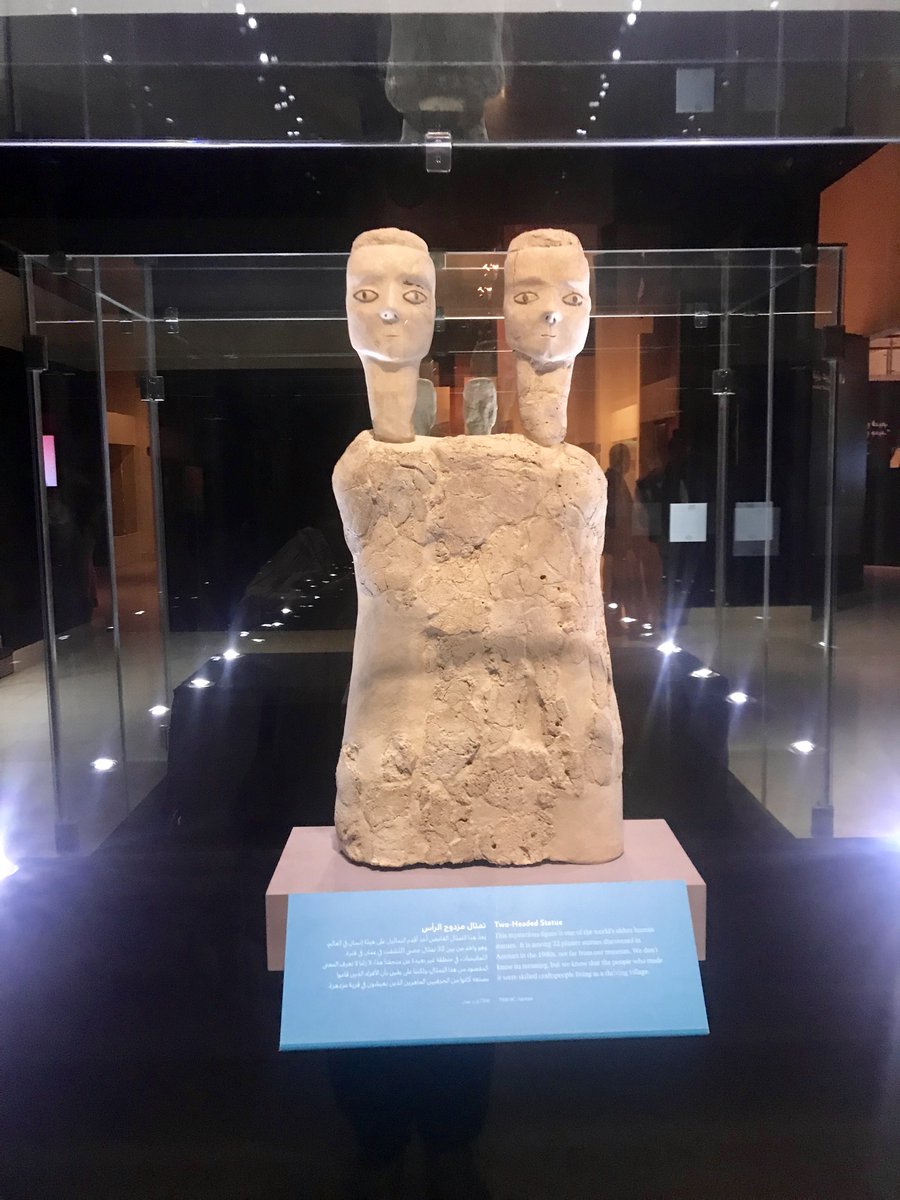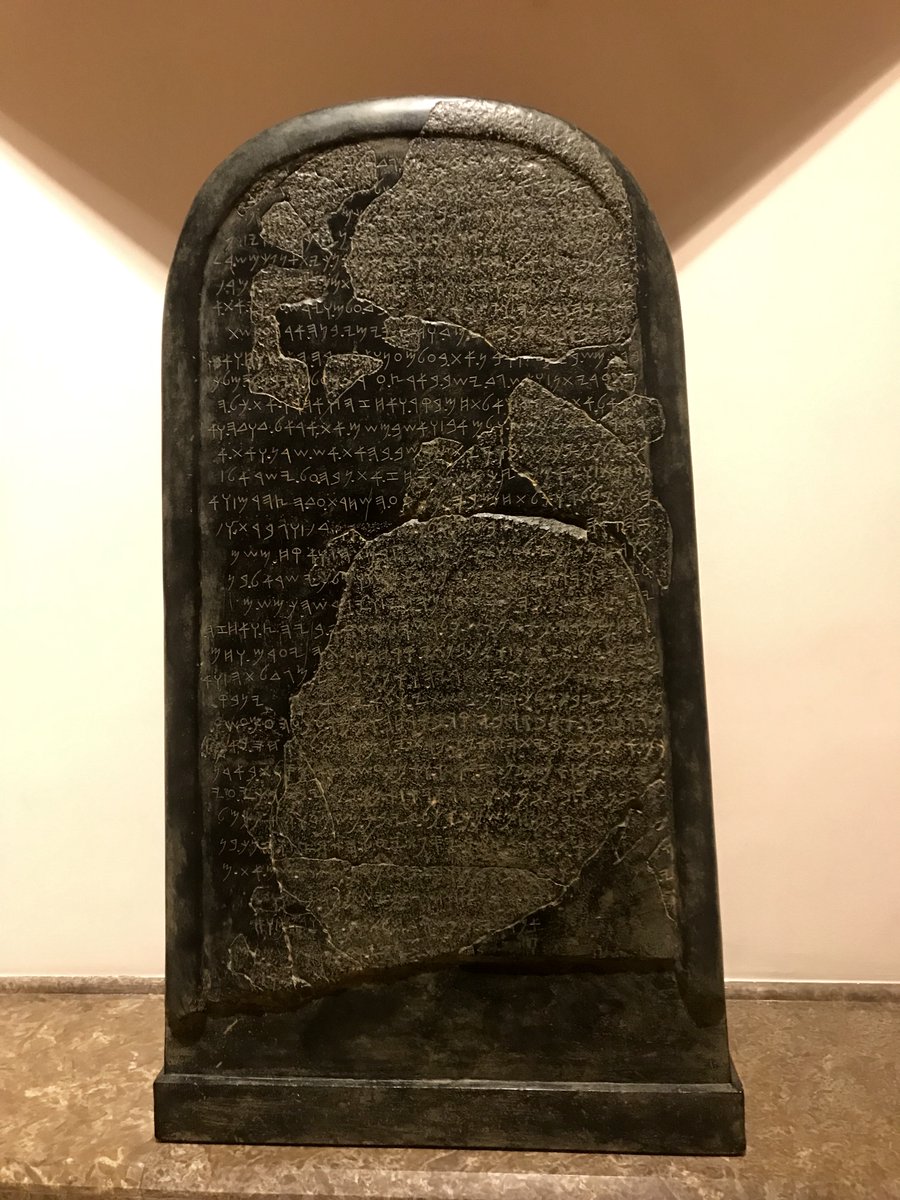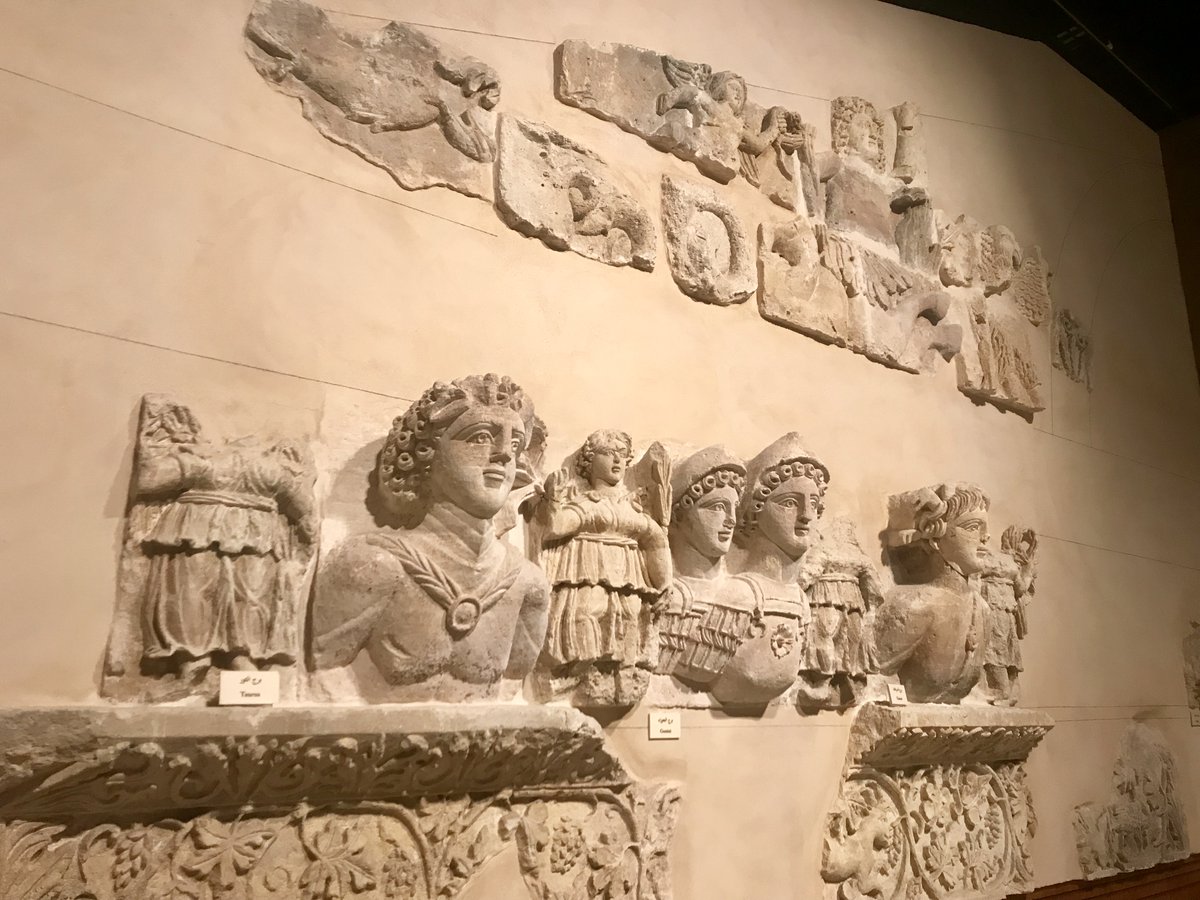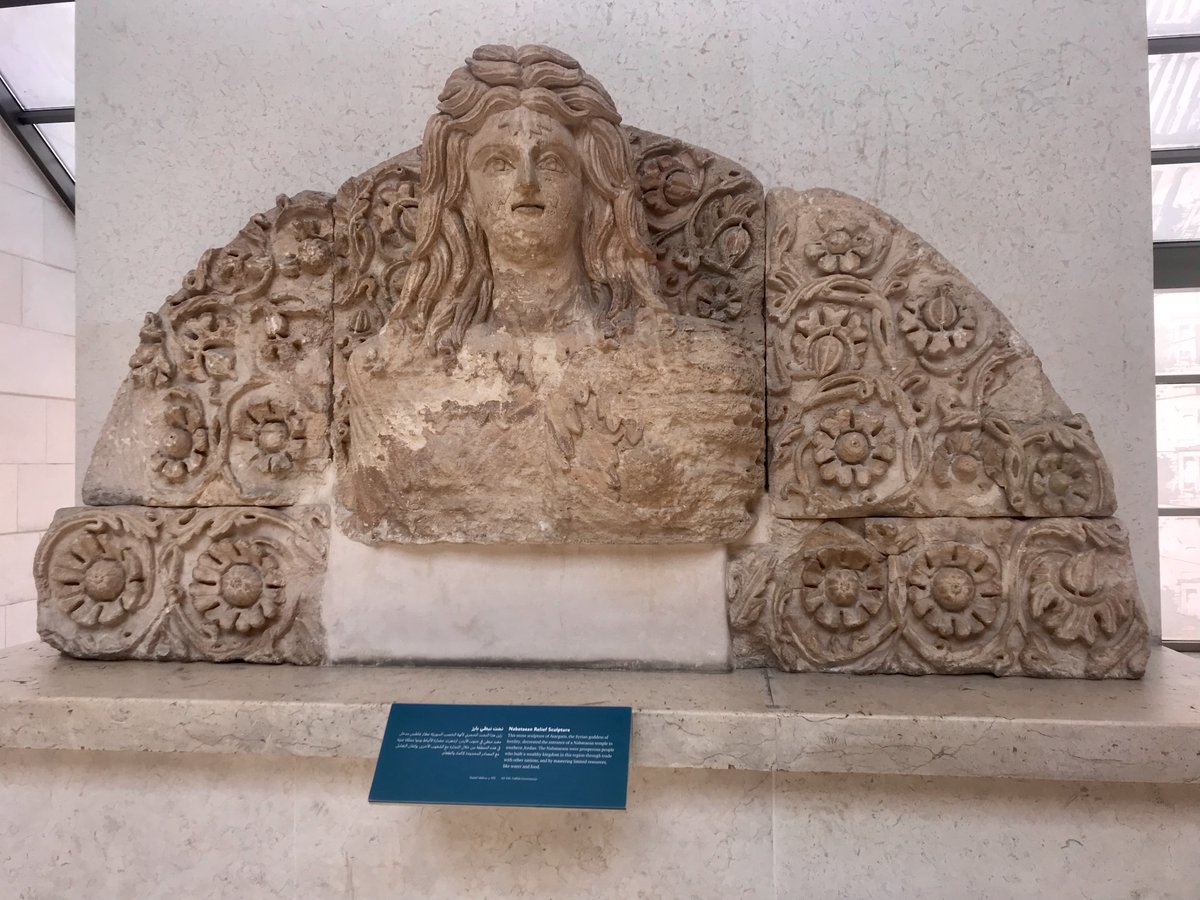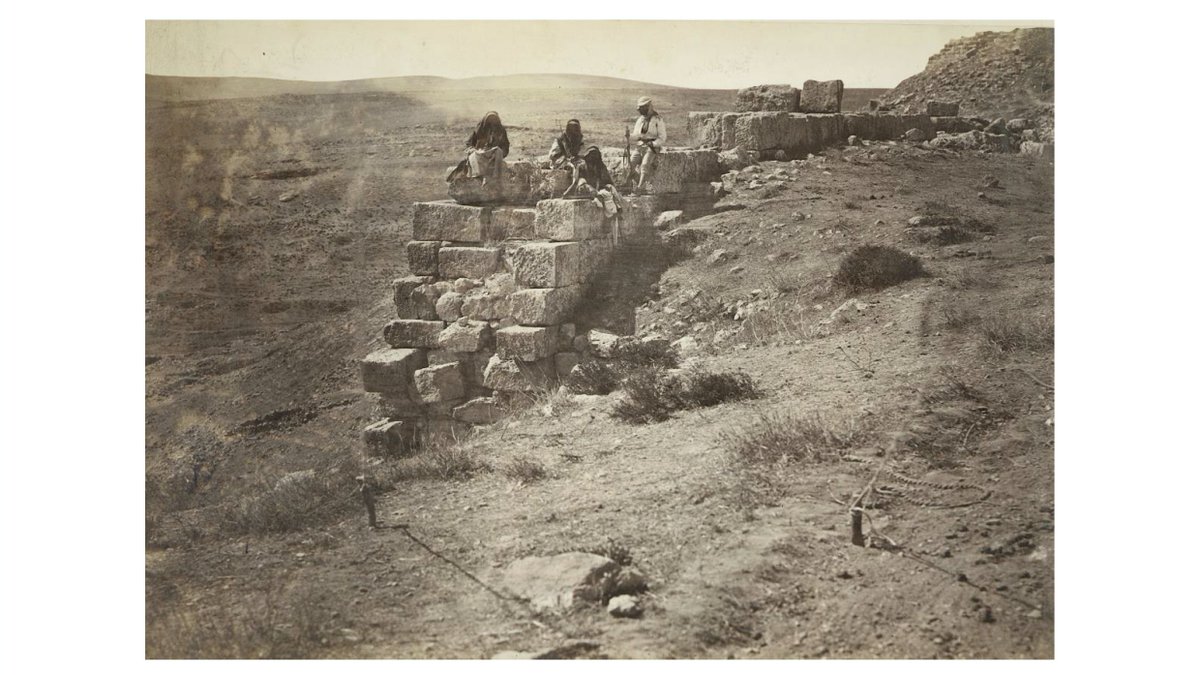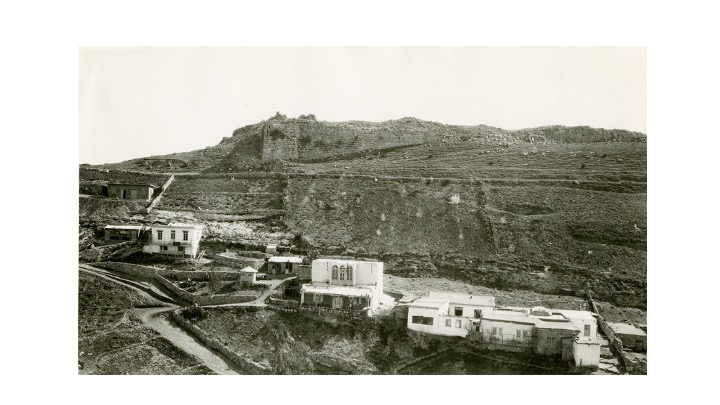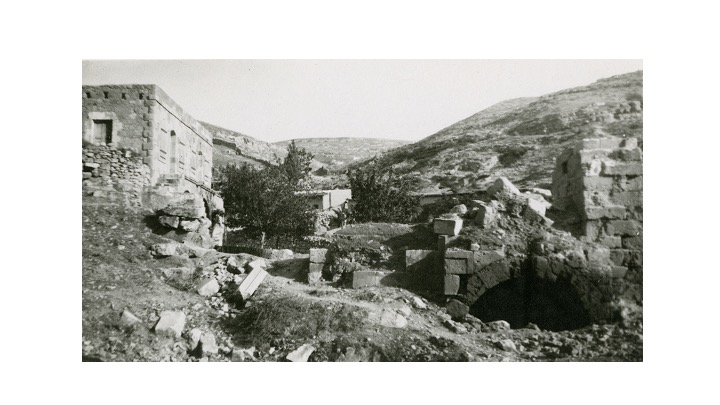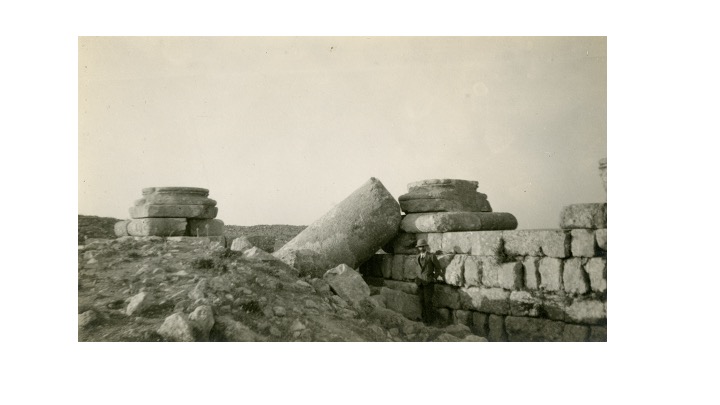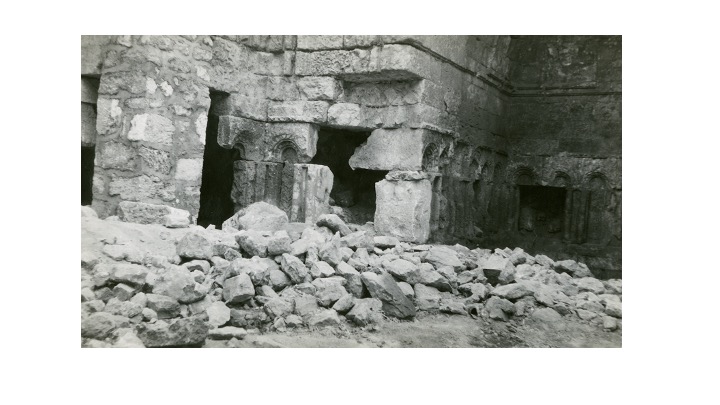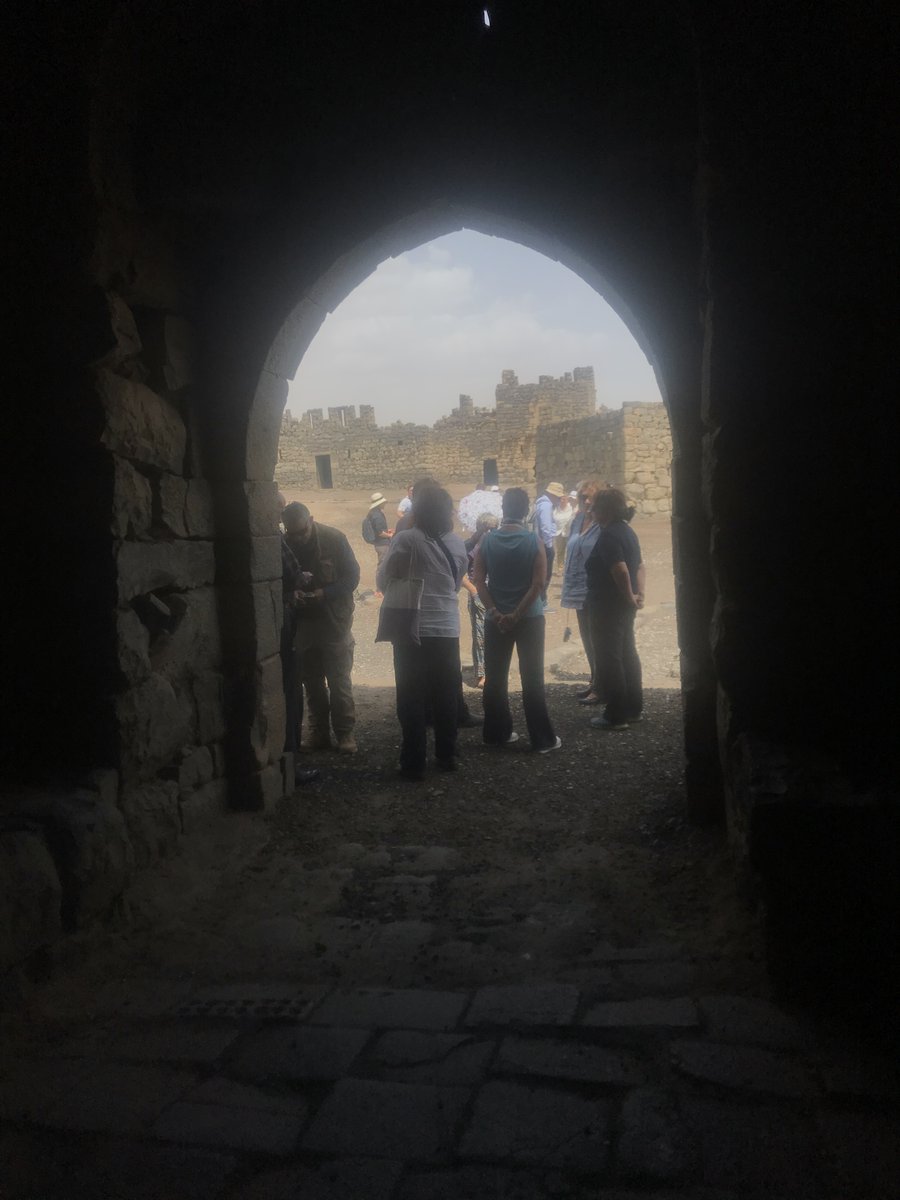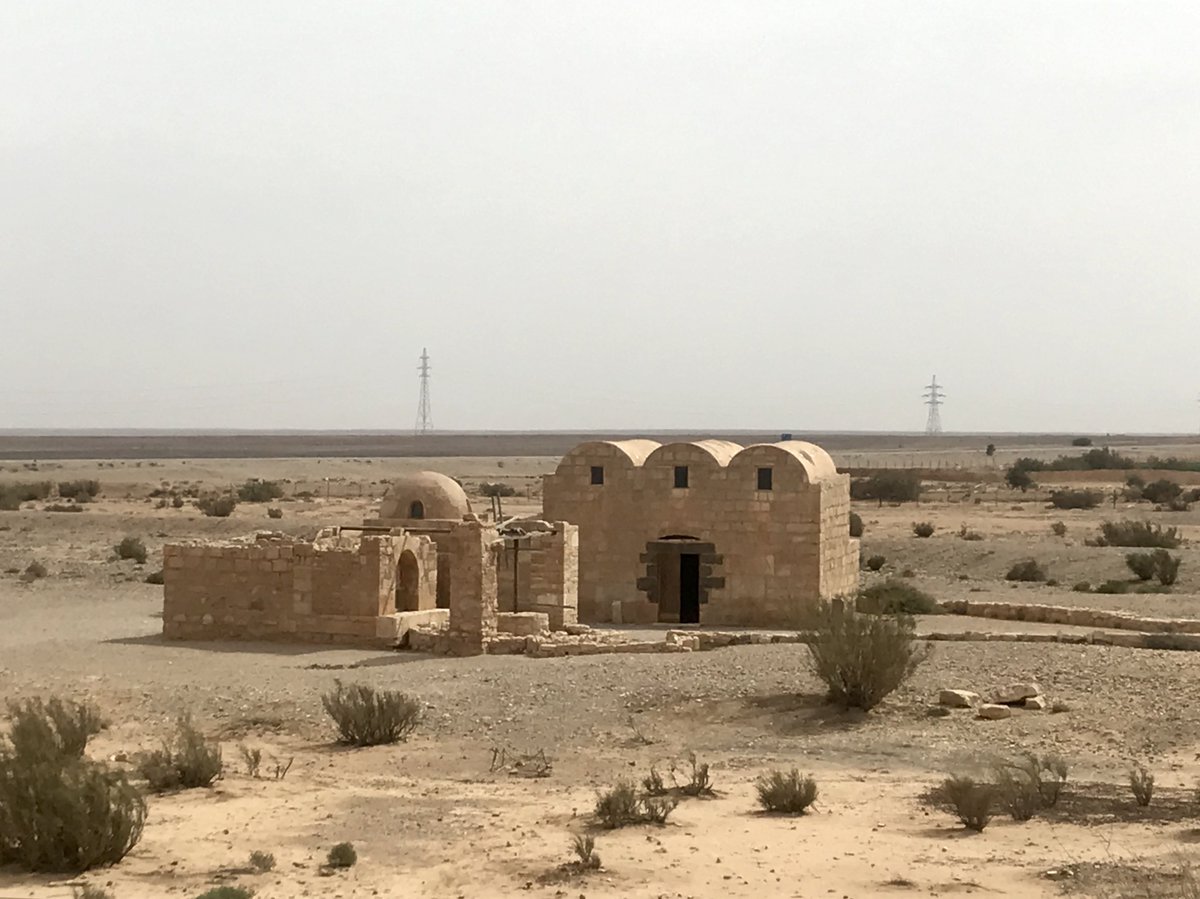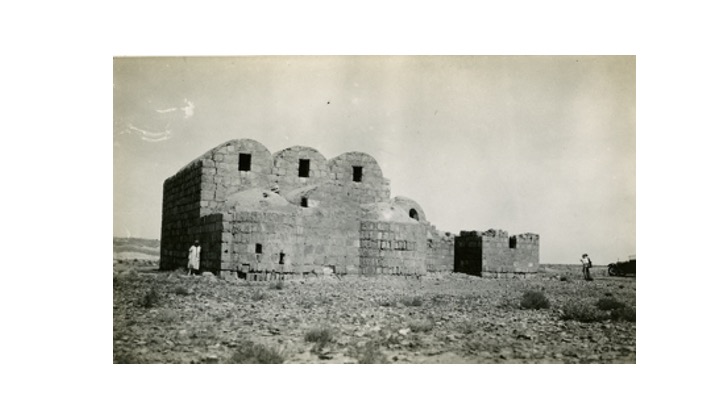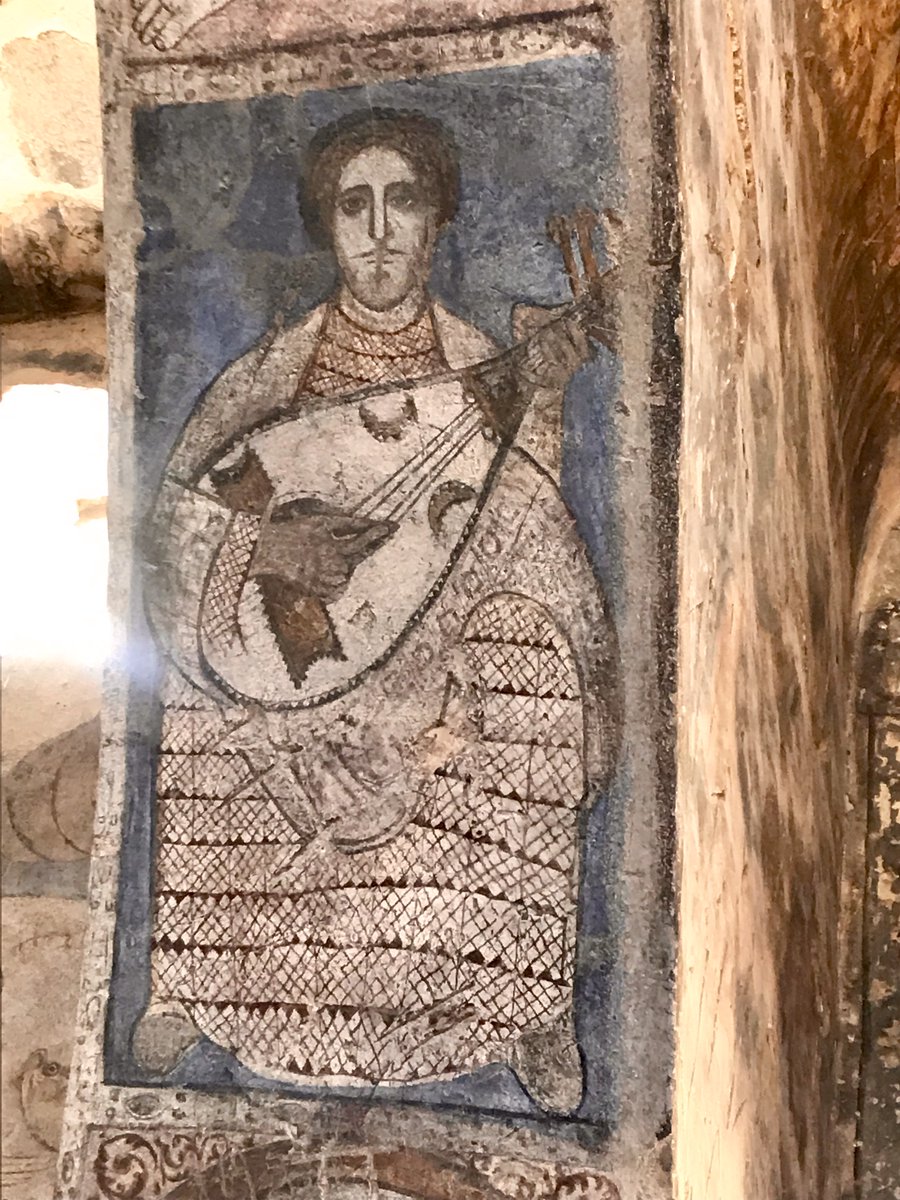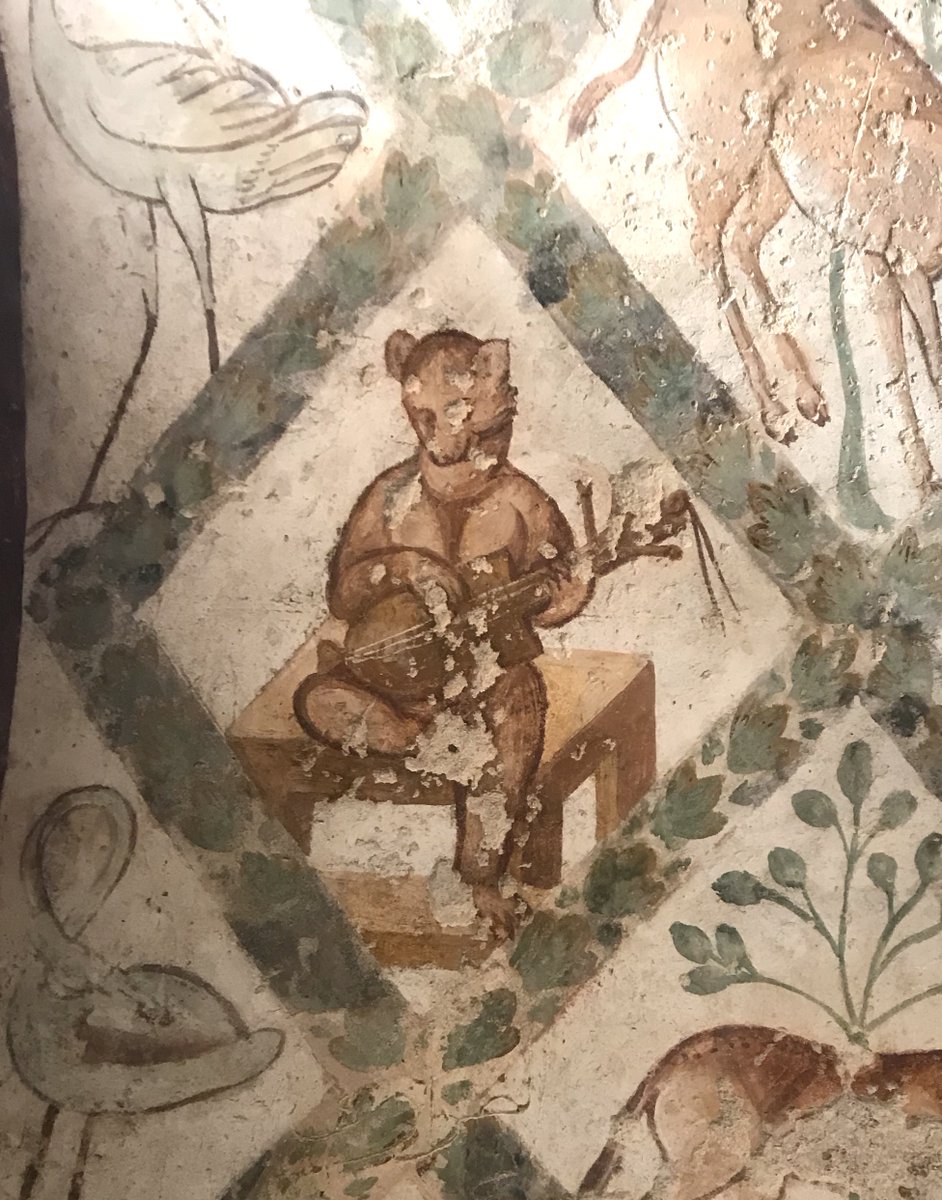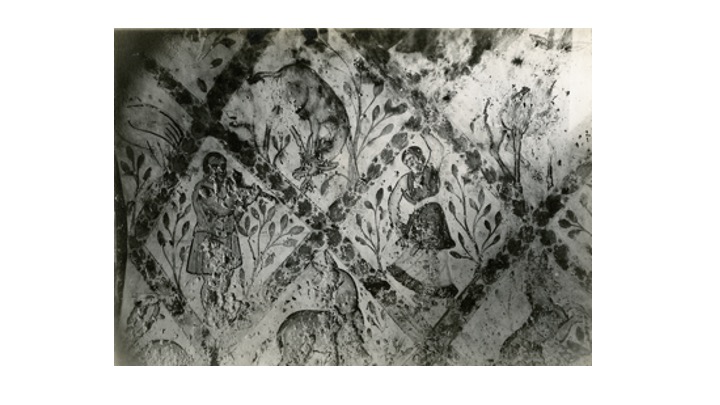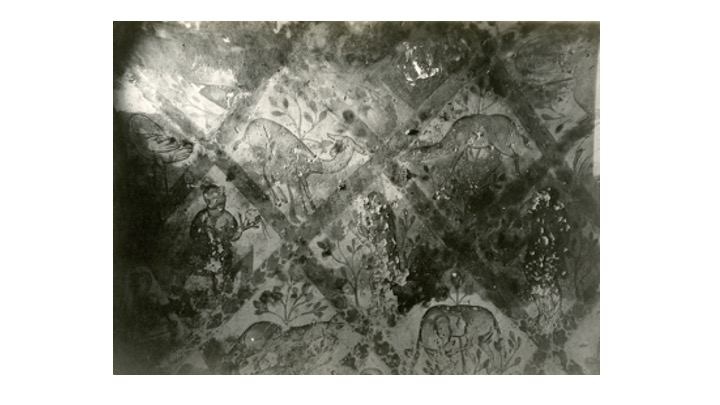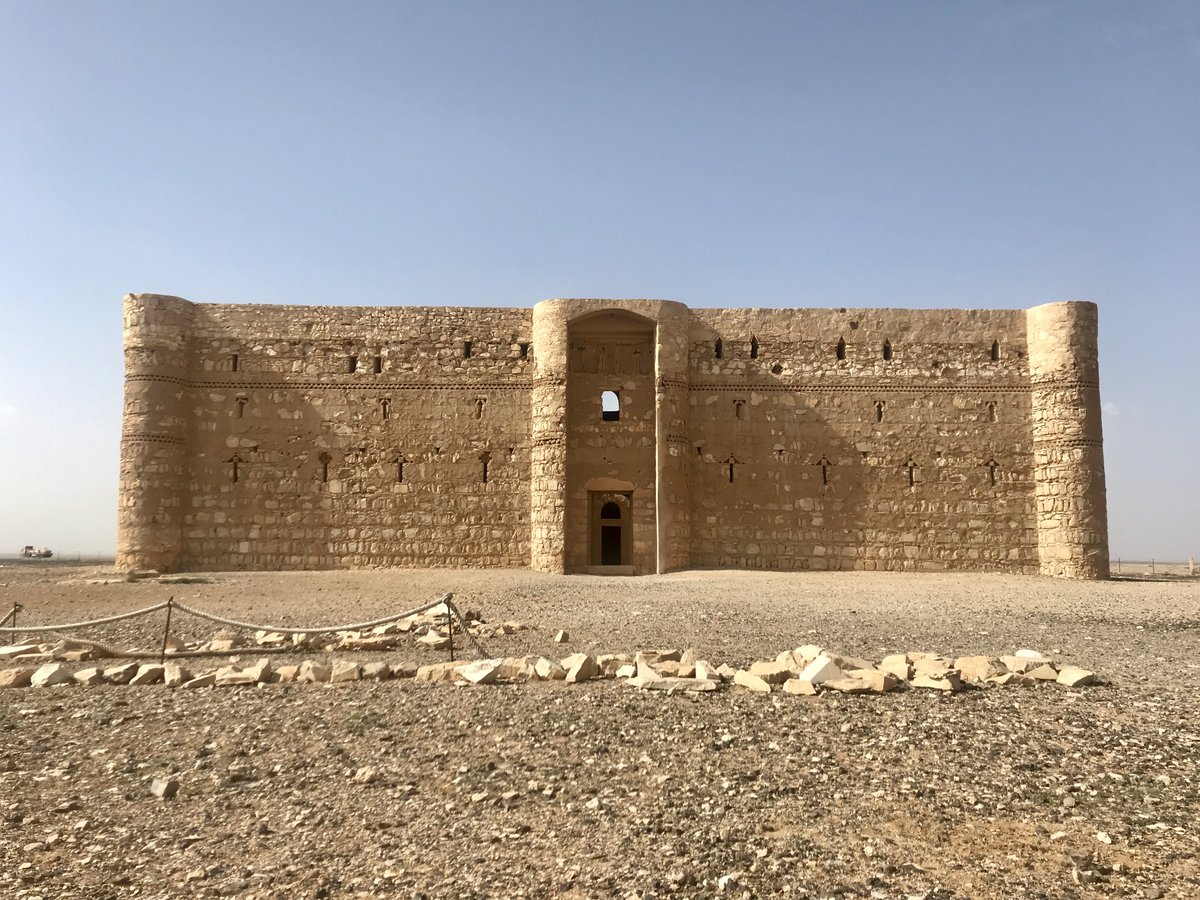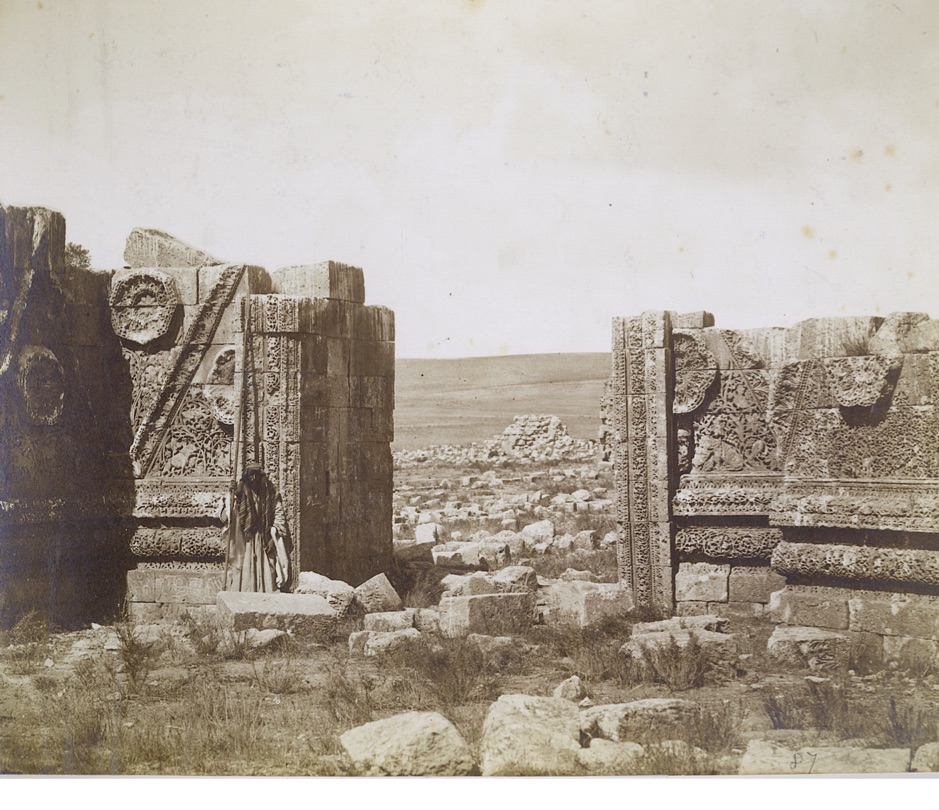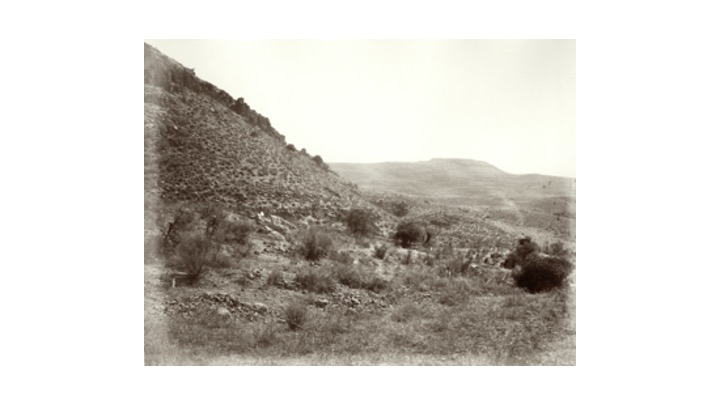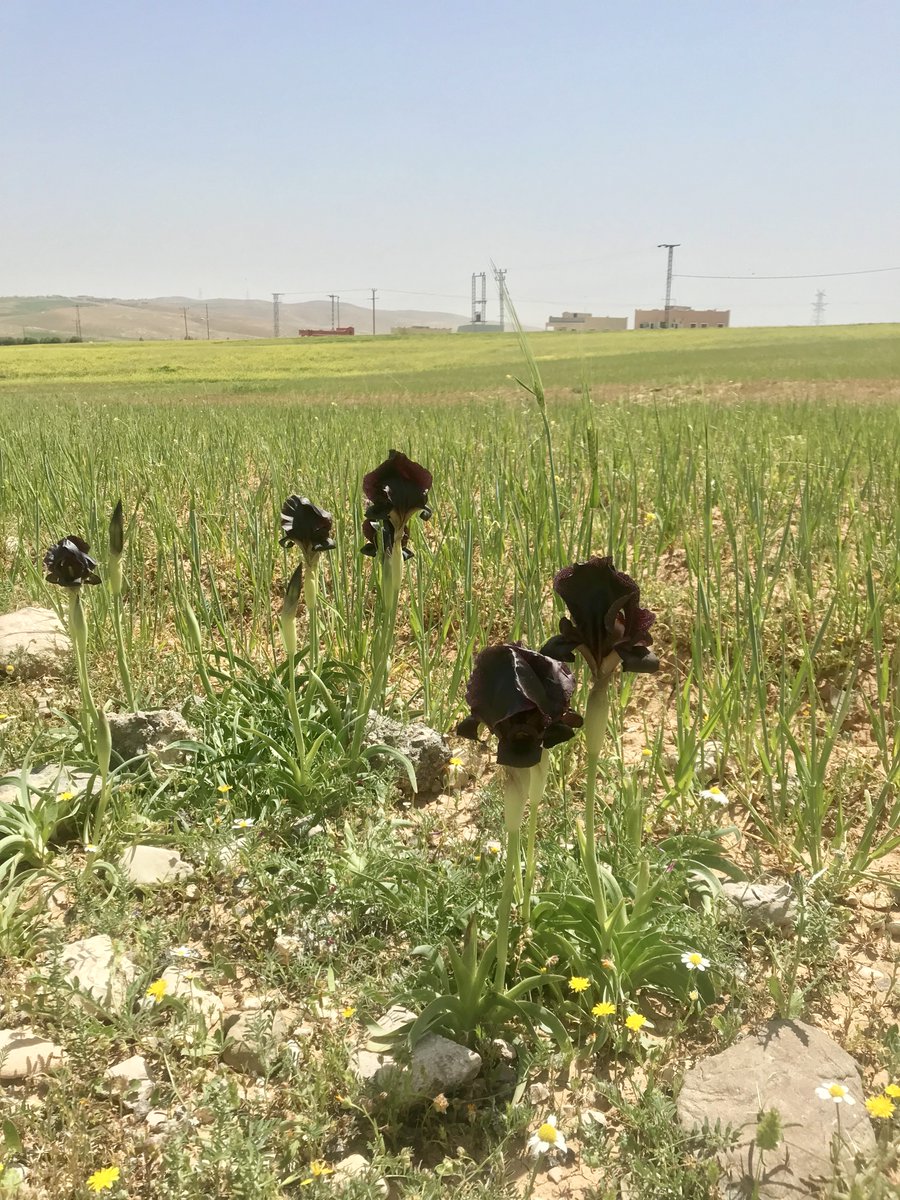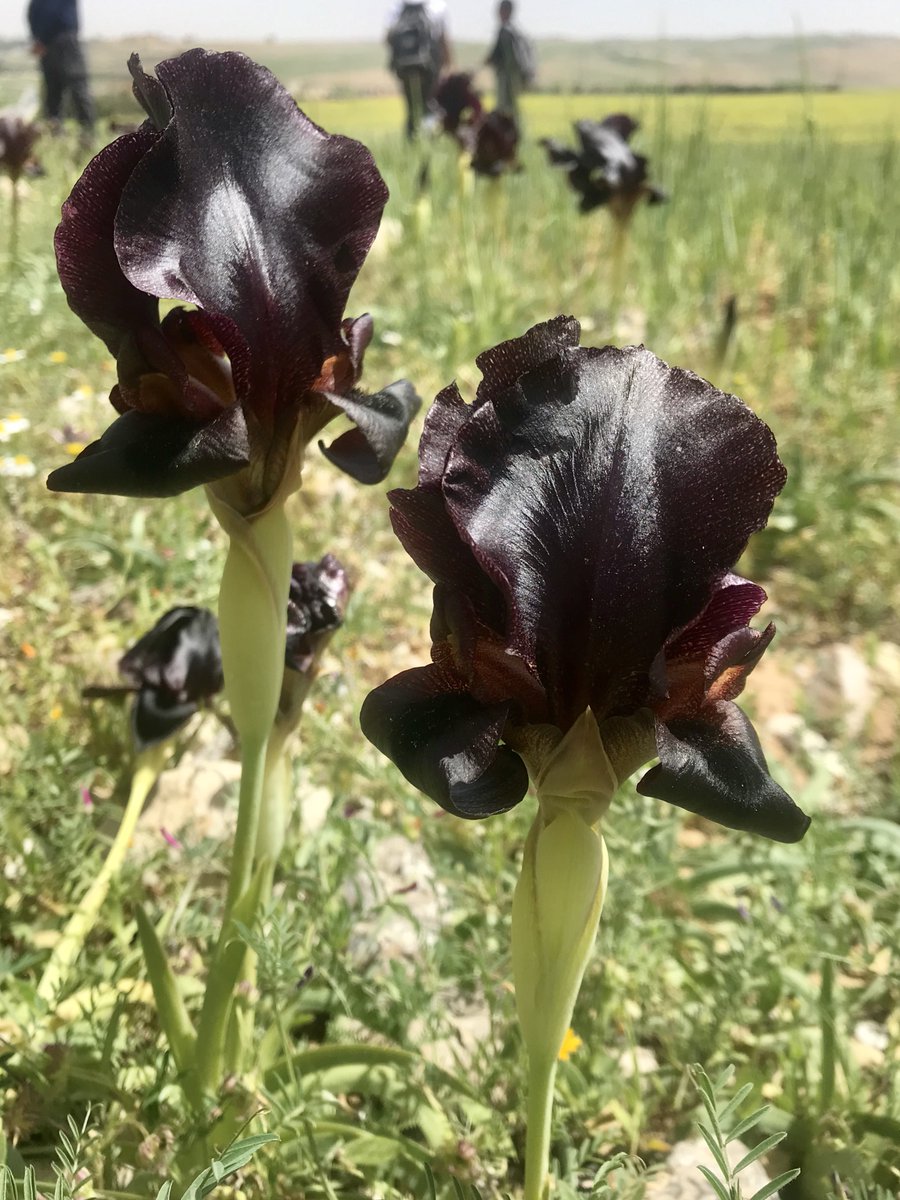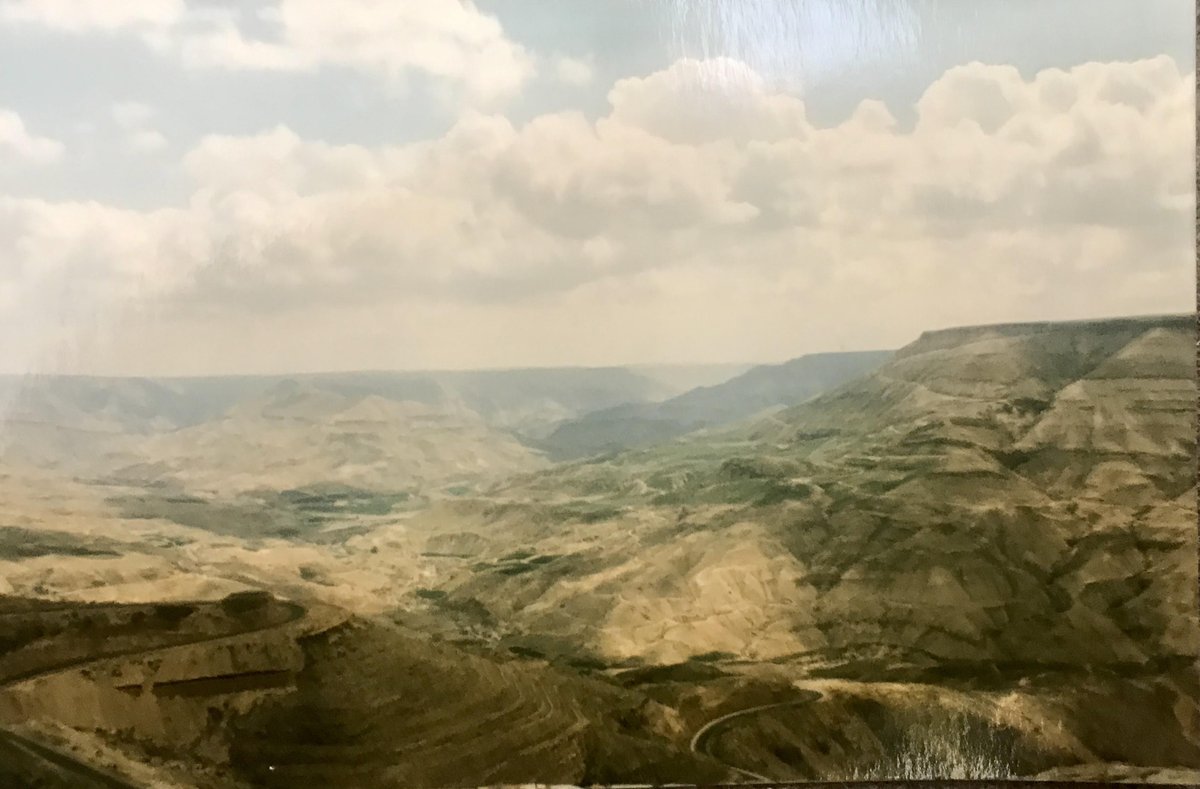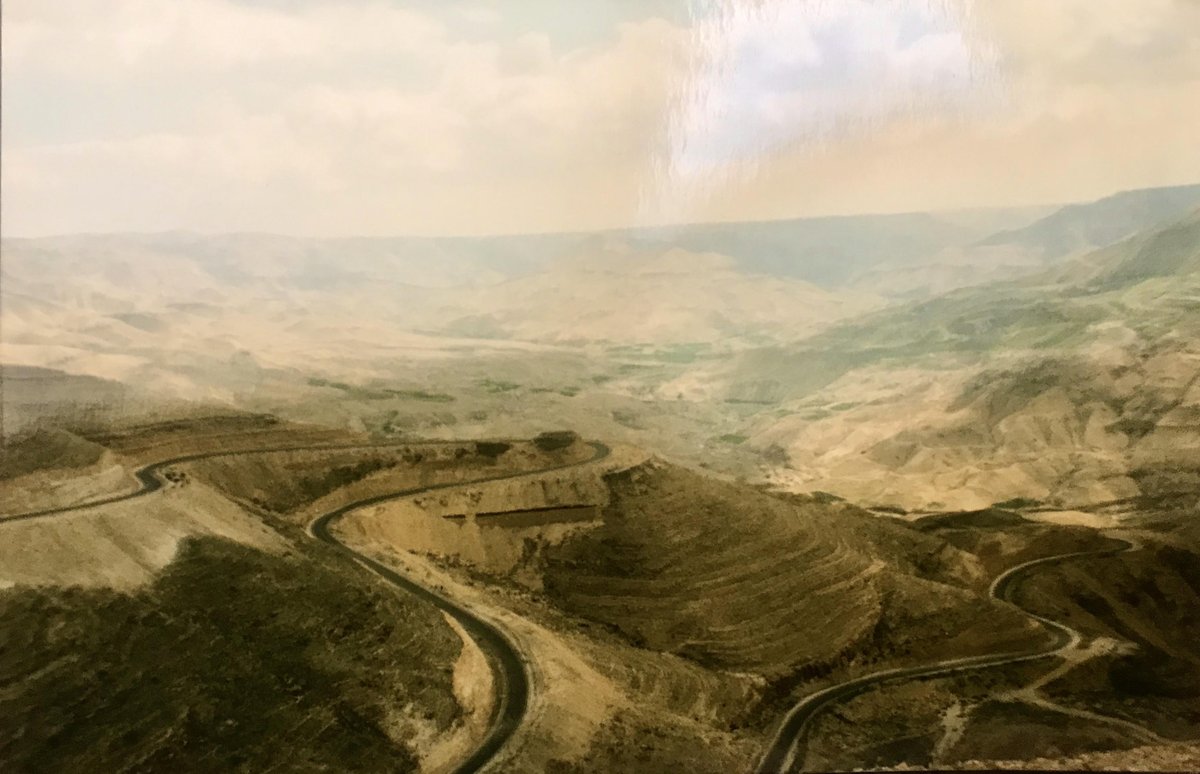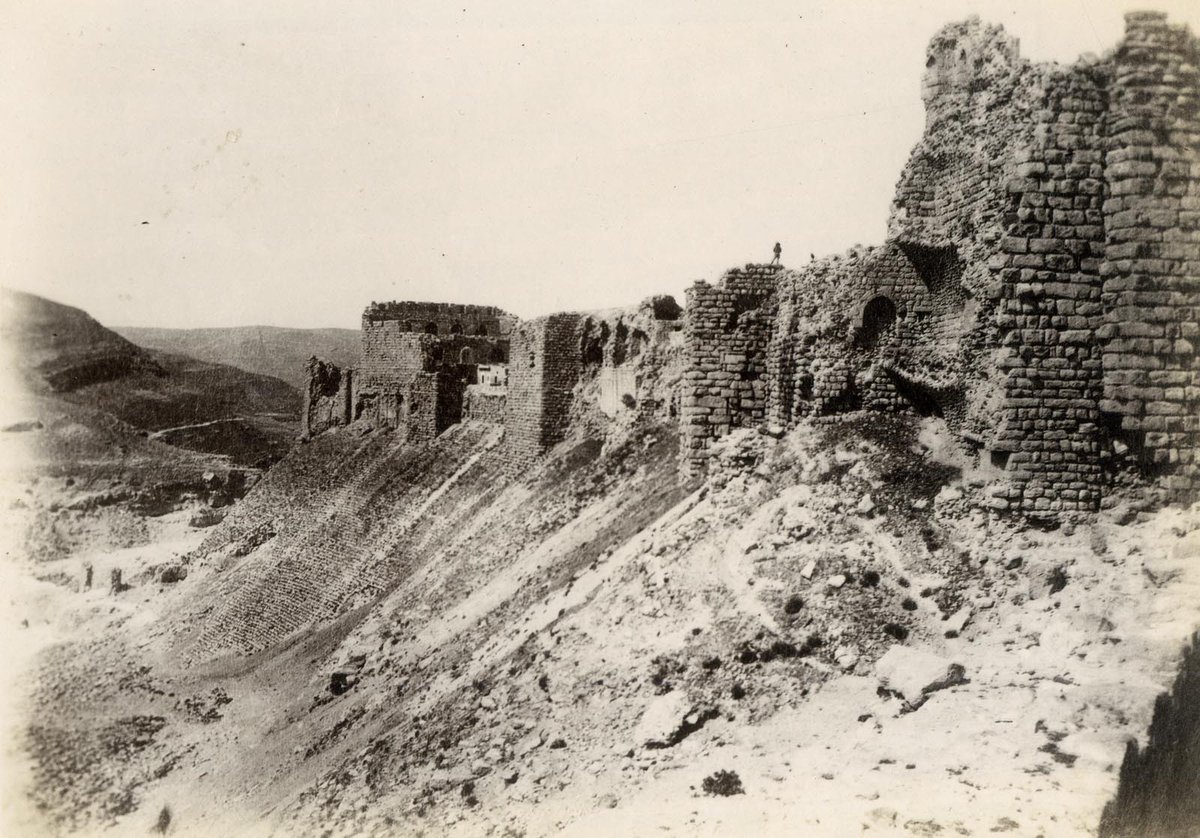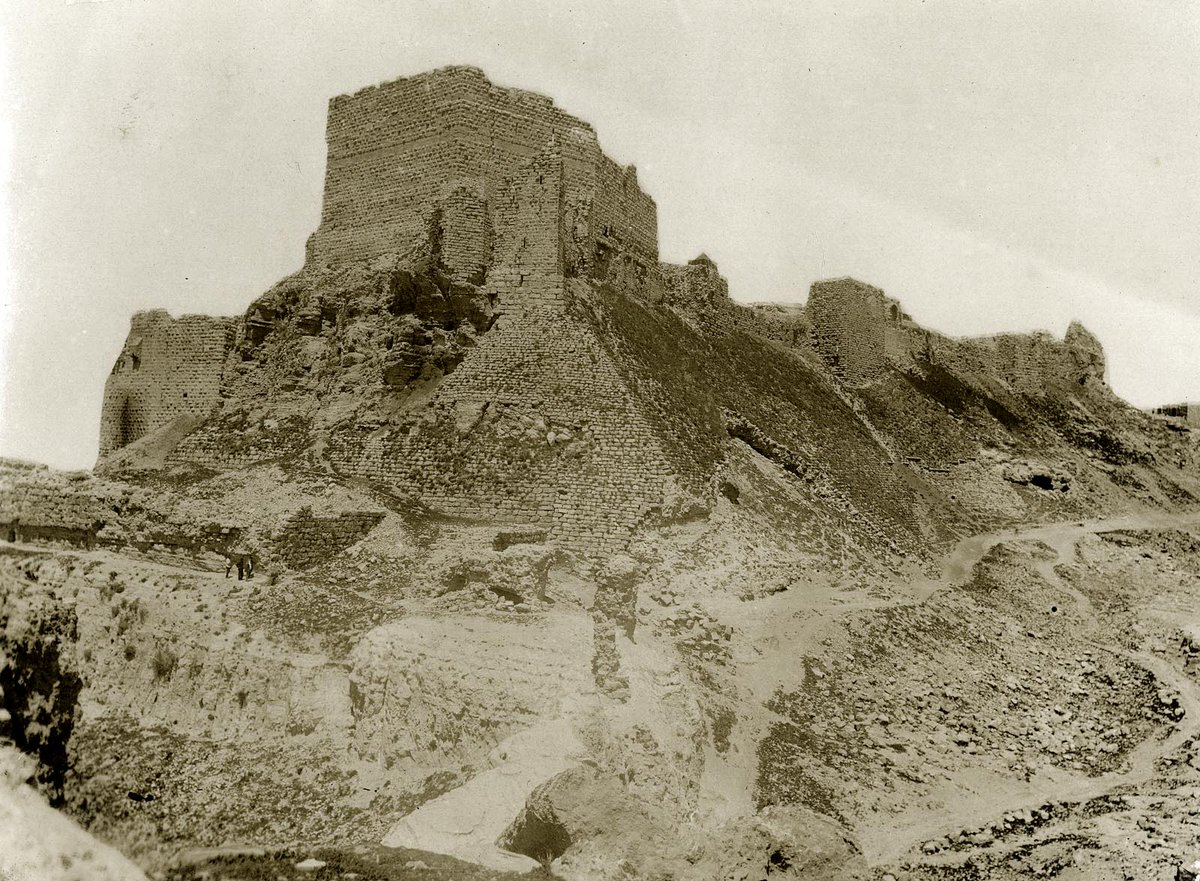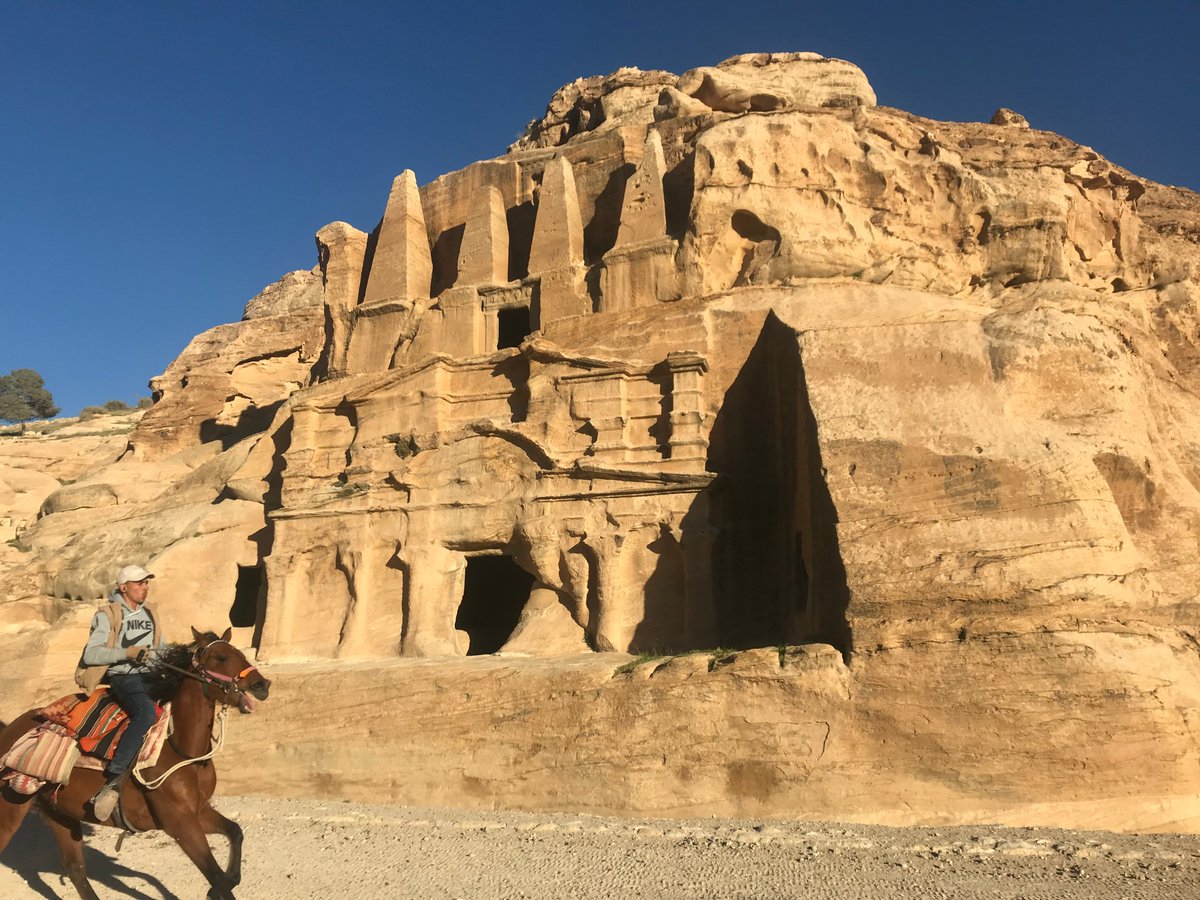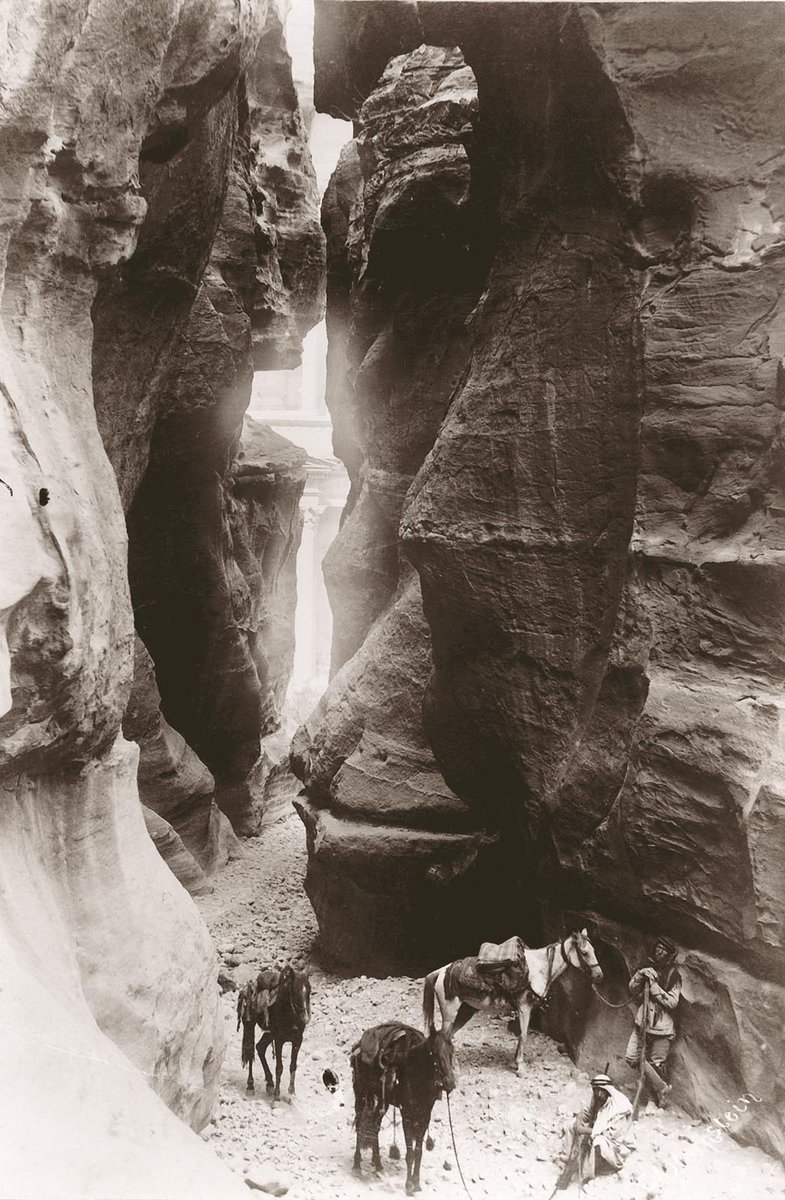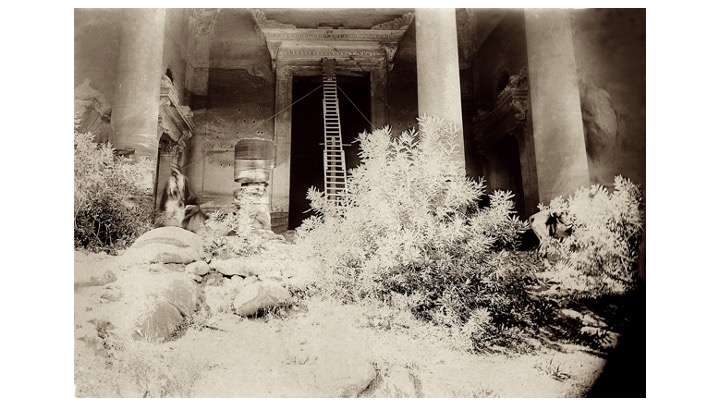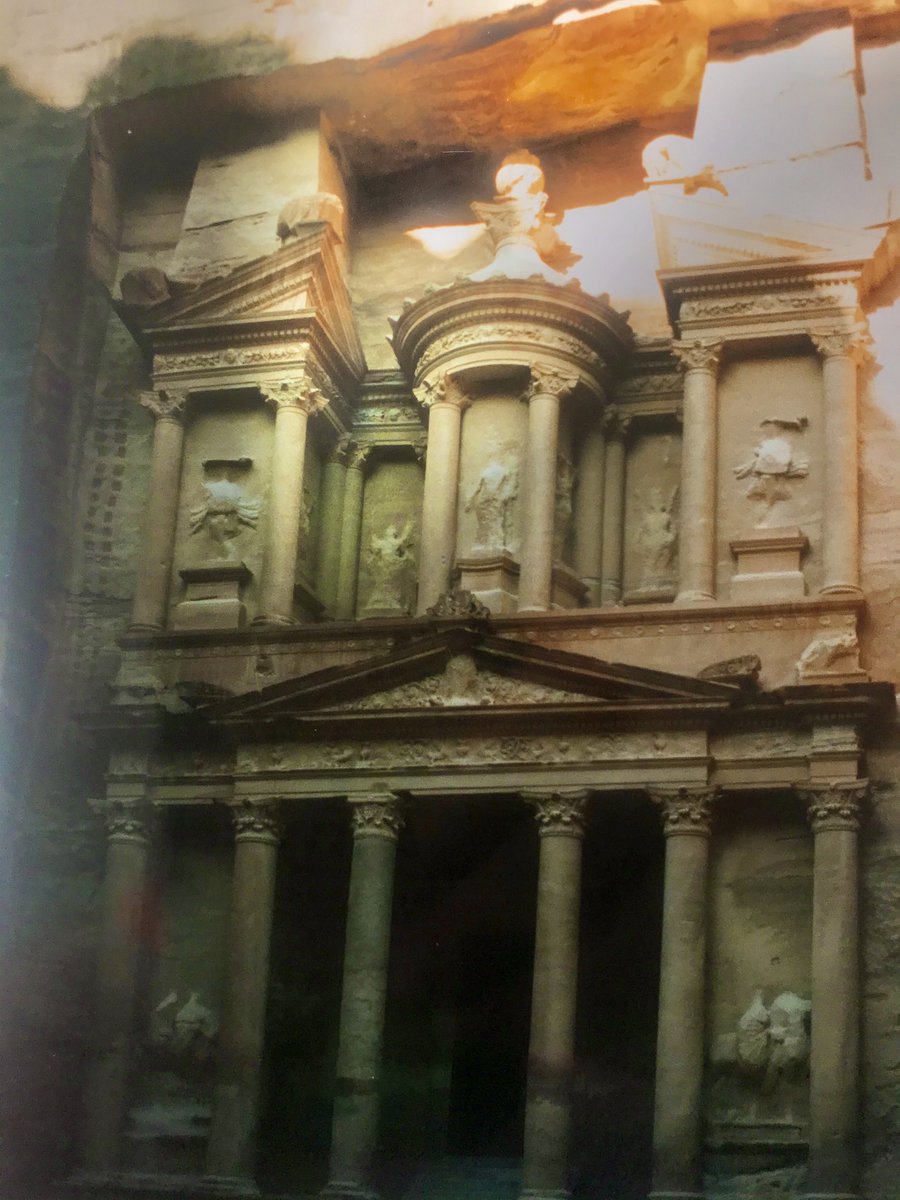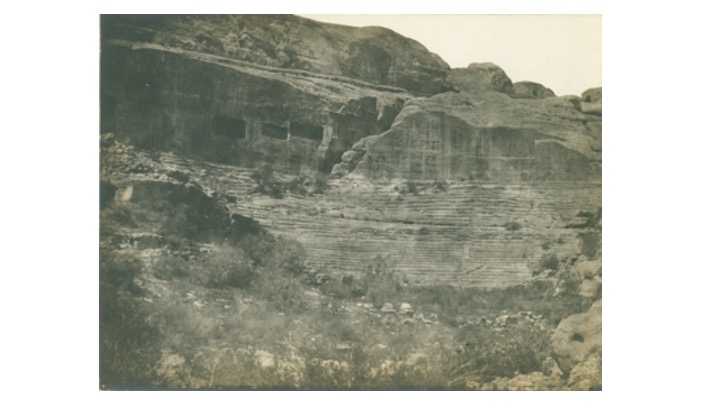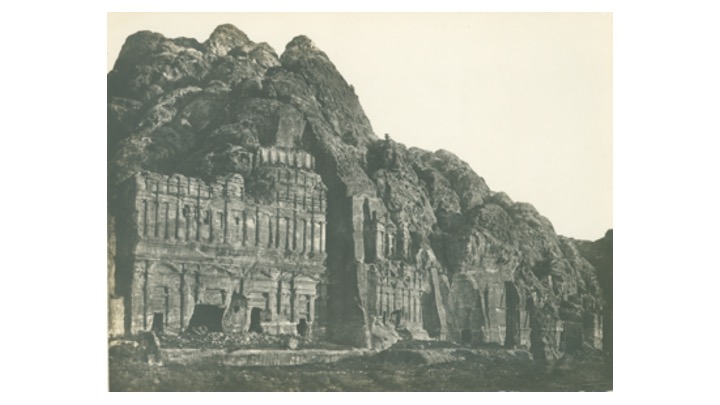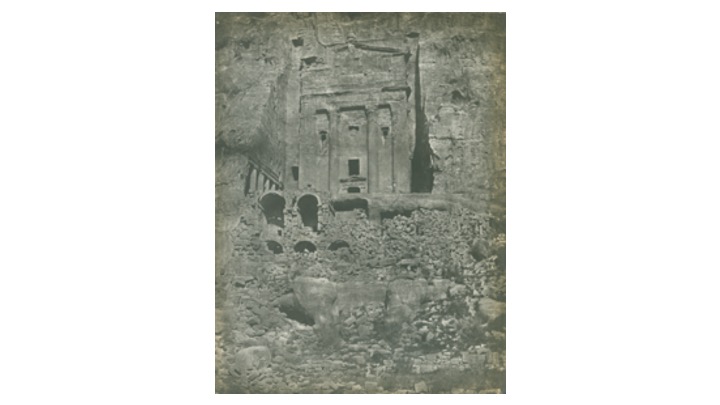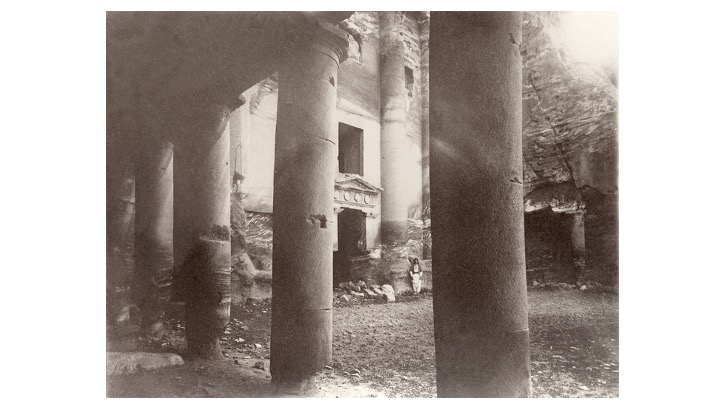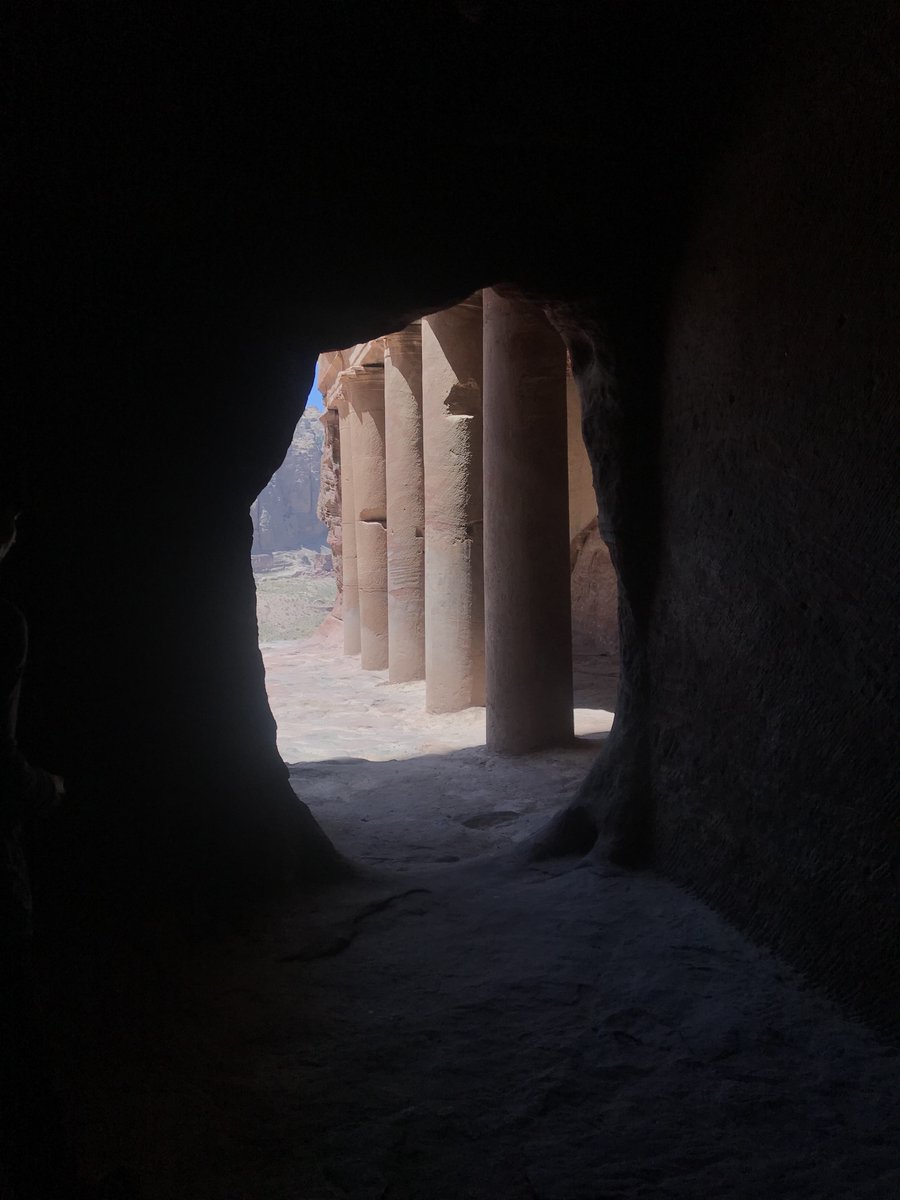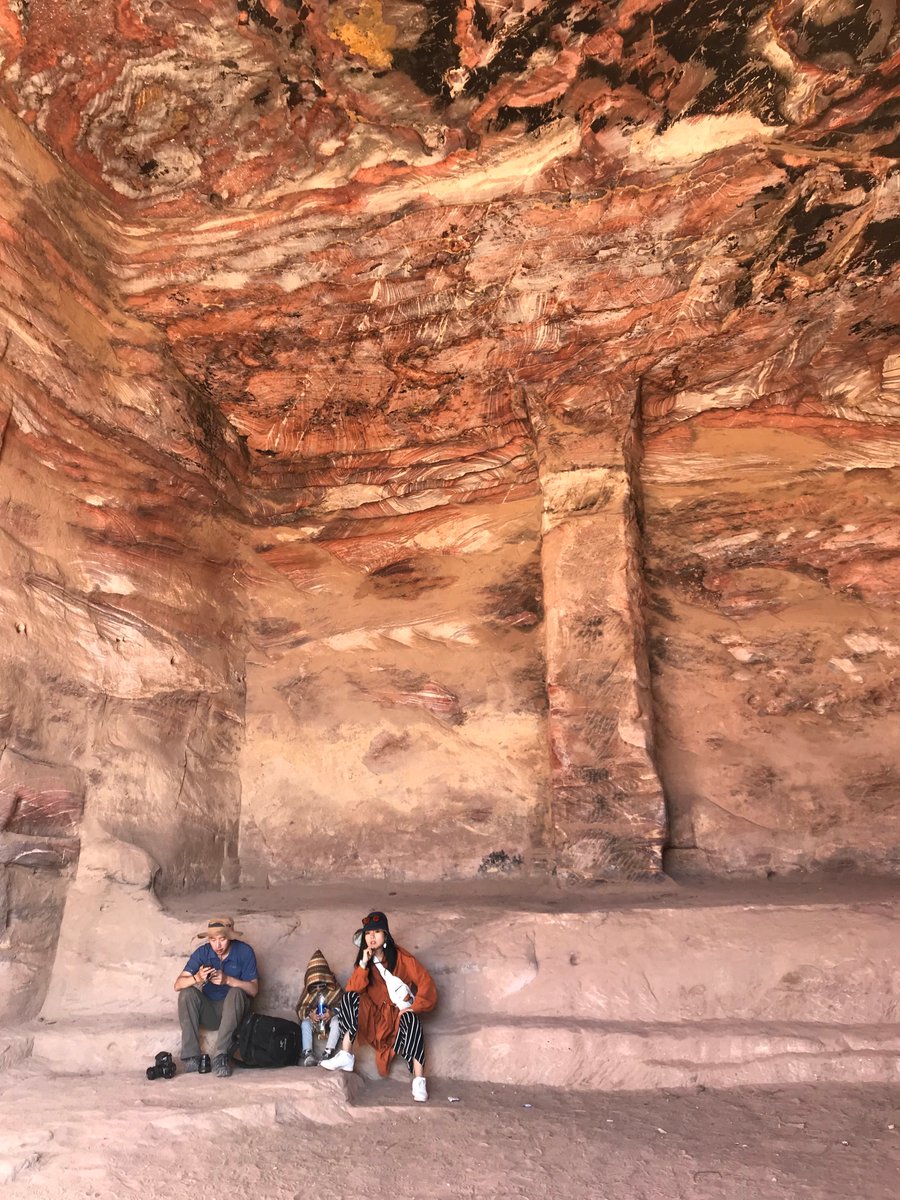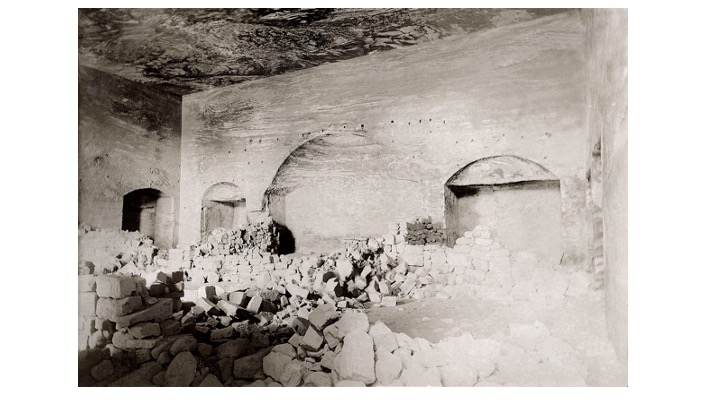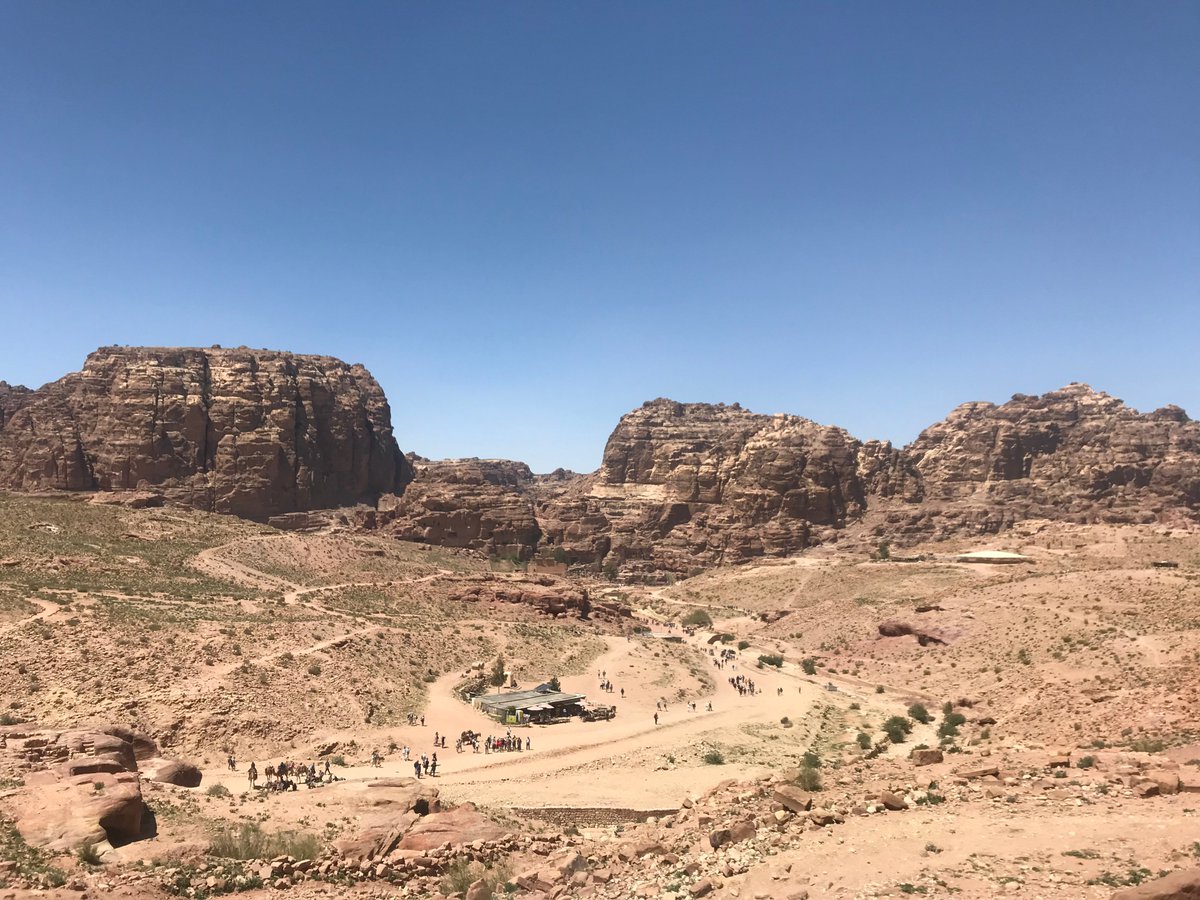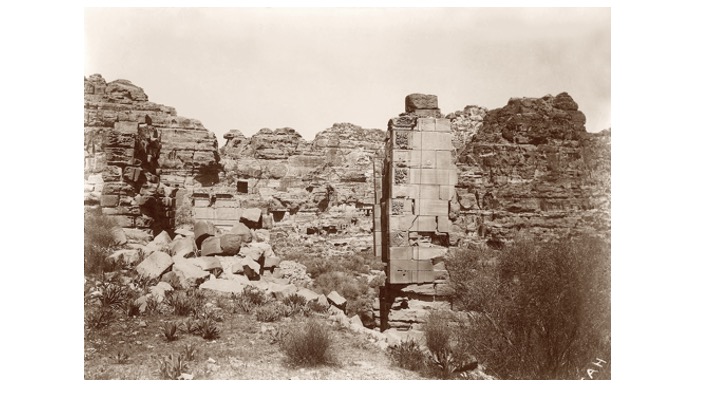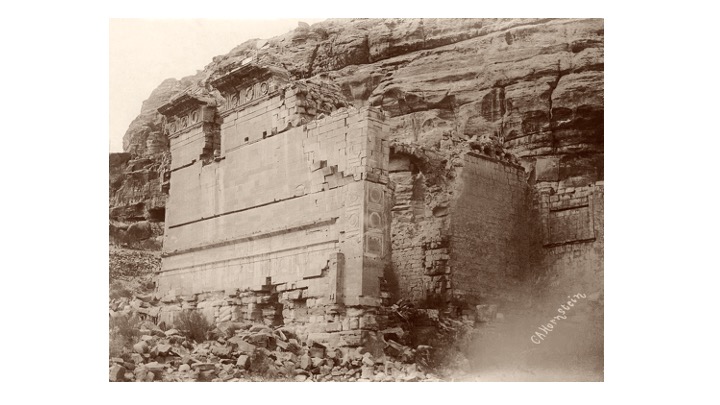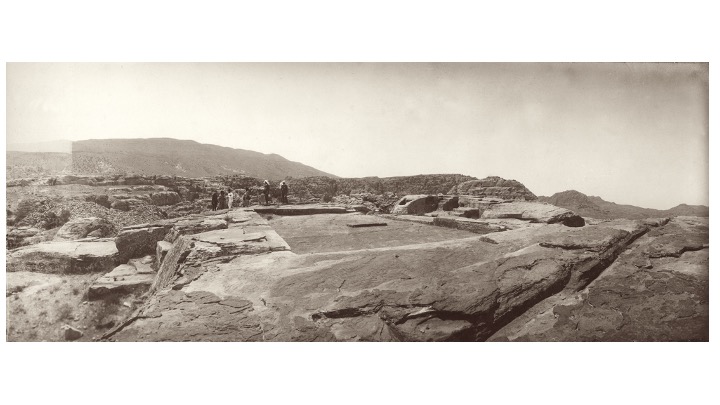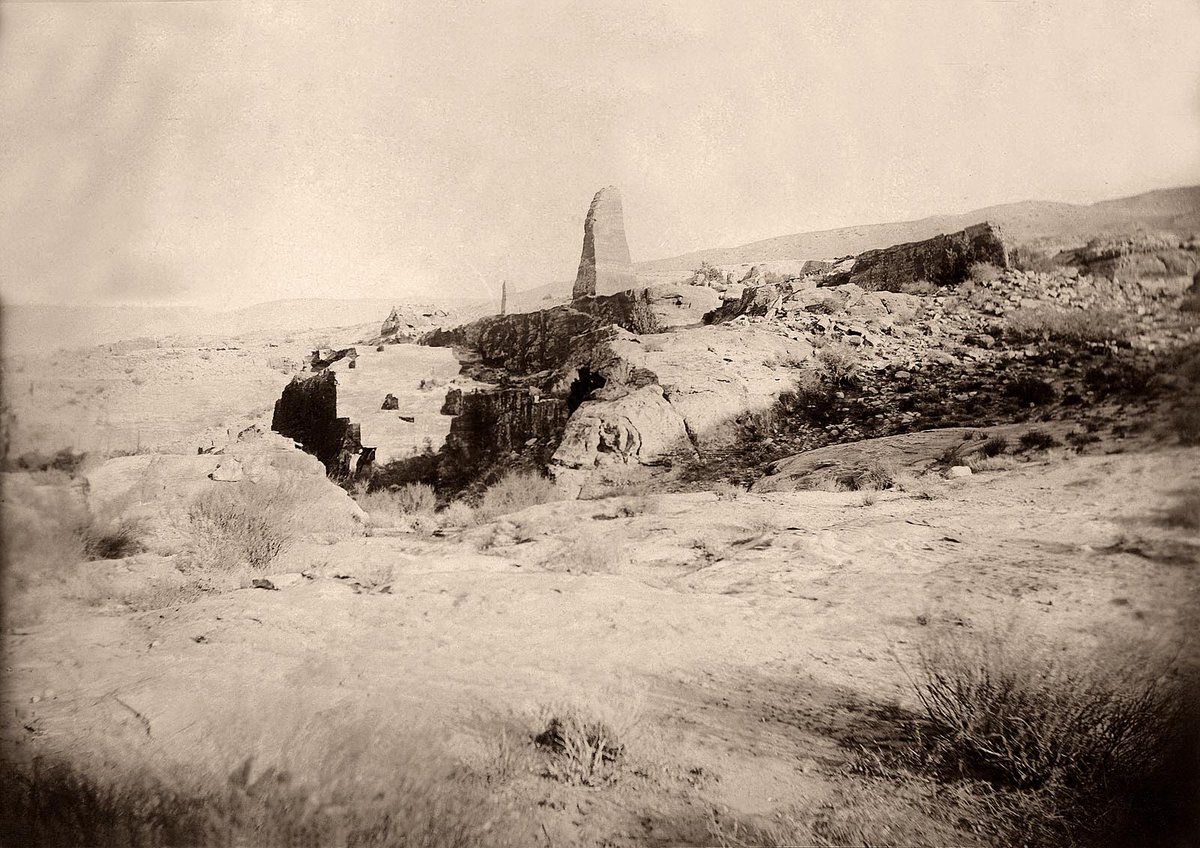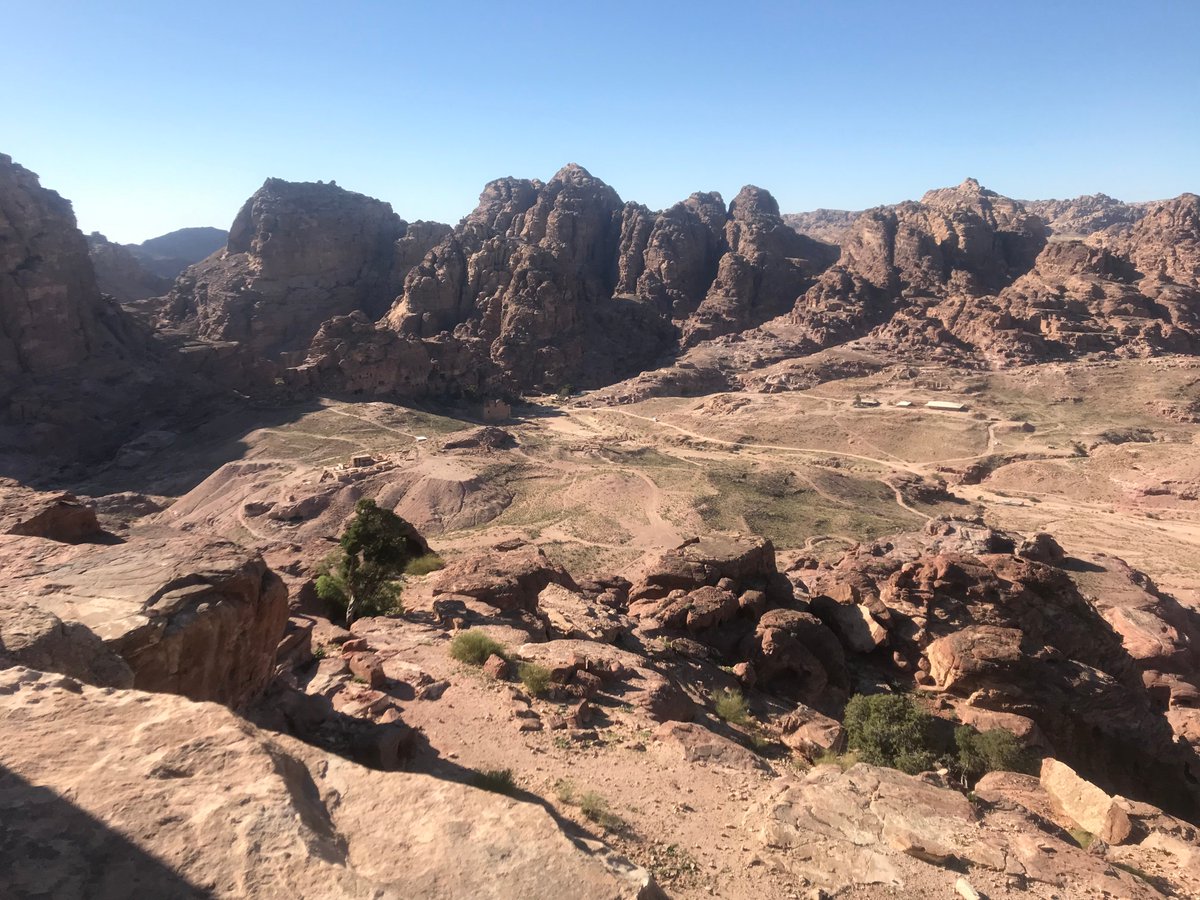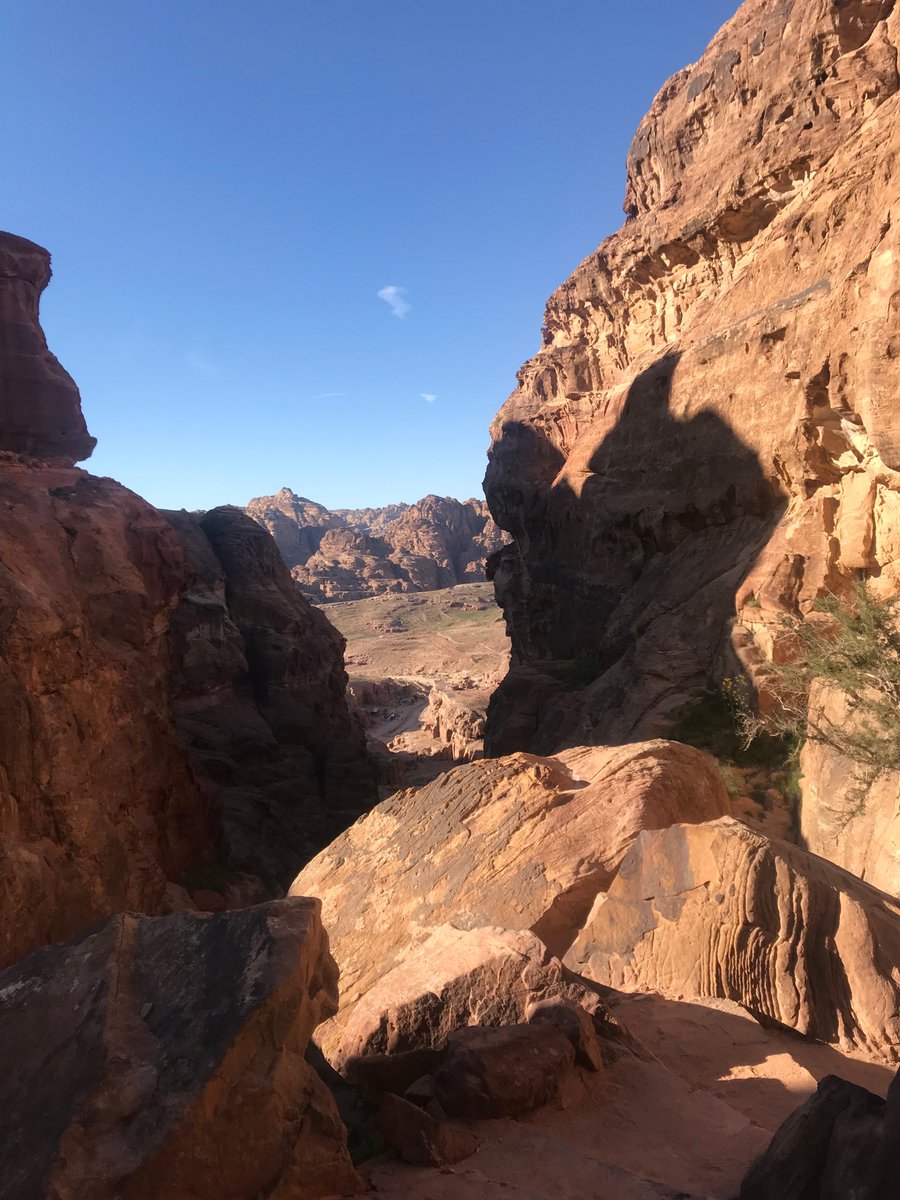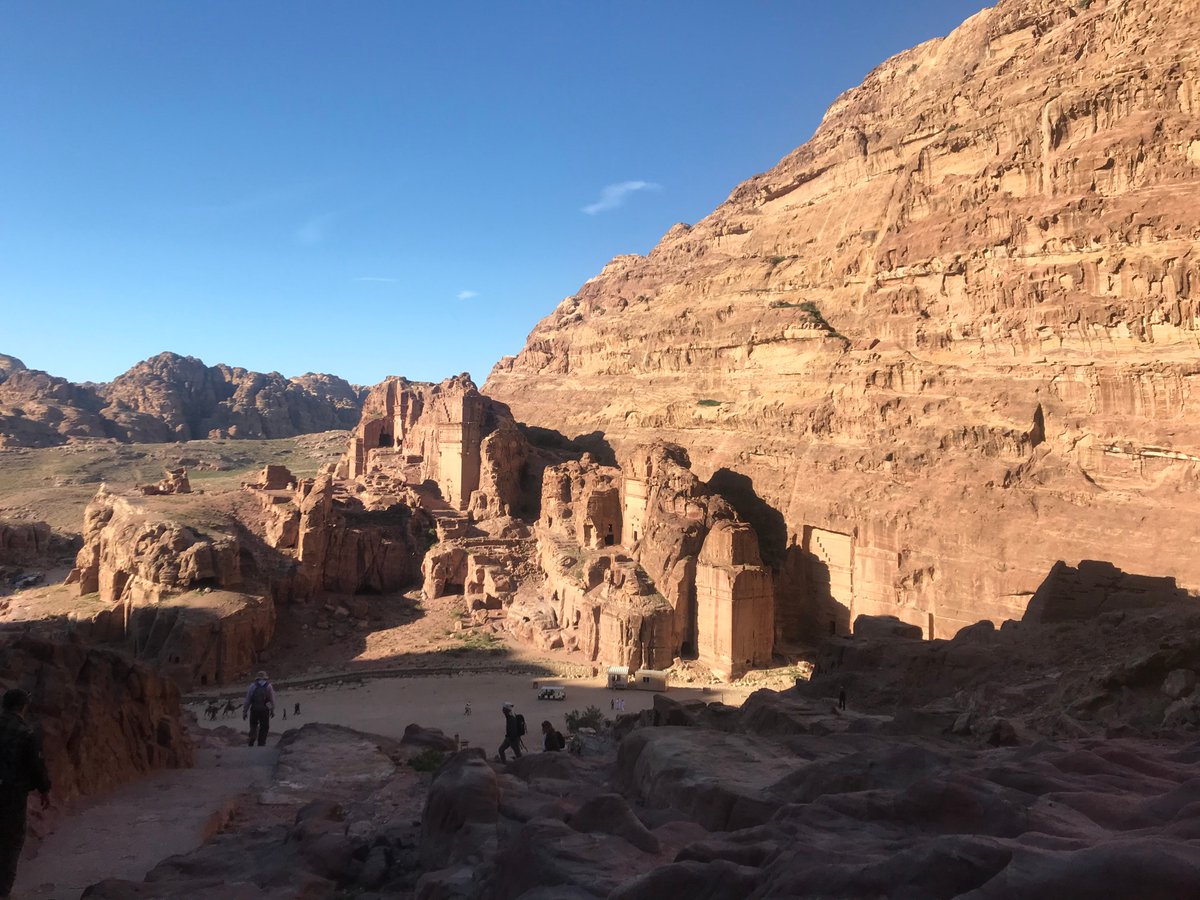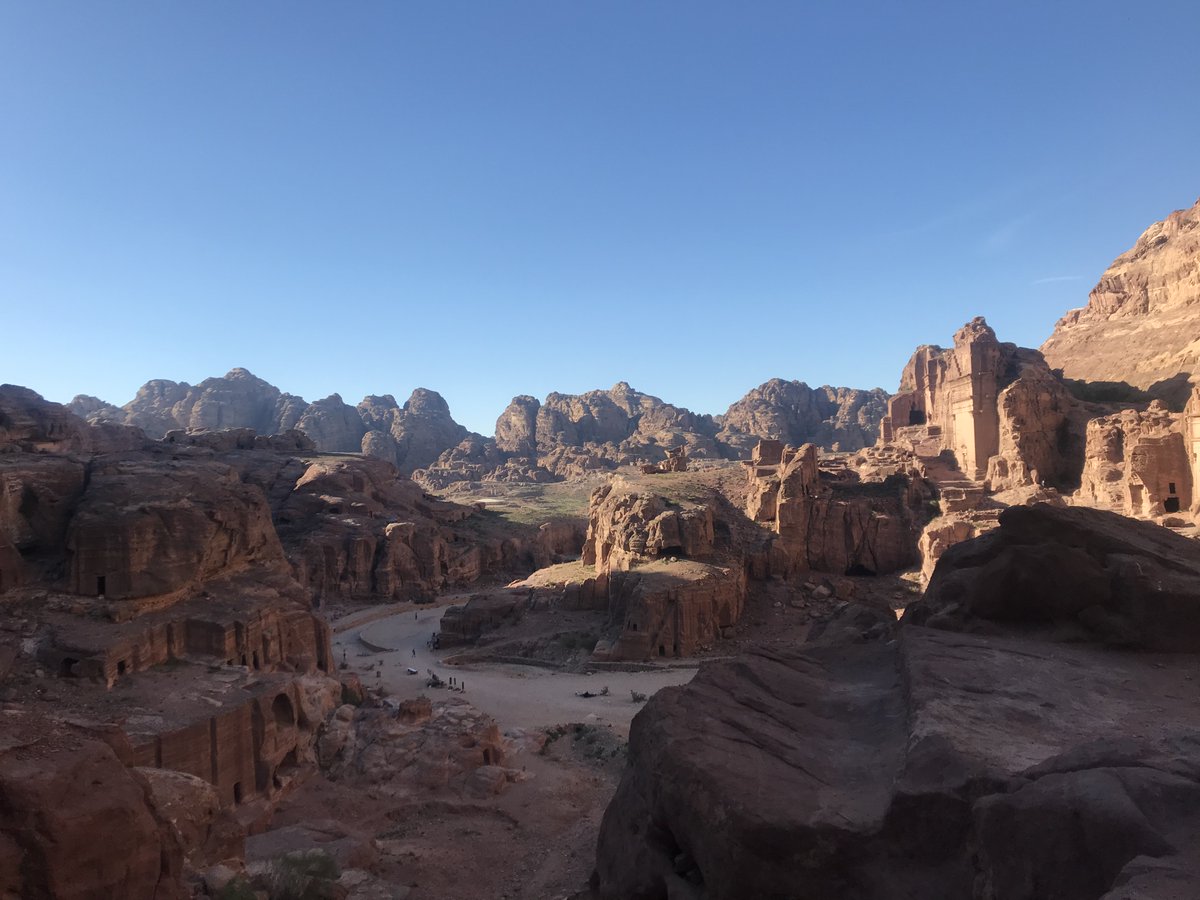Today I should& #39;ve been taking some lovely people on the 9 day @Martin_Randall tour of Essential Jordan. Instead, here& #39;s a Then & Now virtual tour, with archival photos from the @PalExFund supplementing my own snaps. So - with an ancient (1976) tourist map in hand, are you ready?
Normally, on our @Martin_Randall tour, we& #39;d be taking a plane to Amman (remember those?), but in the past getting to Jordan was much more difficult (archive photos from @PalExFund) We& #39;ll start our tour properly tomorrow, so get a good night& #39;s sleep, you& #39;re going to need it!
Today the @Martin_Randall & #39;Essential Jordan& #39; Tour, we& #39;re off to Iraq el-Emir, (Qasr al & #39;Abd) a rare survival from the 3rd century B.C. Hellenistic era in Jordan. The unfinished palace was probably built for Hyrcanus of the Jewish Tobiad family, & the governor of Ammon.
It& #39;s now been restored but in 1867 when Charles Warren and his team from the @PalExFund visited, it was a ruin as this photo from the archives shows.
Here are a couple more photos of Iraq el Emir as it looks today. The darker stone show what had been exposed to the elements for centuries. The lighter stone have been more recently uncovered. Then after lunch we head to Jerash - Gerasa of the Decapolis, so don& #39;t go away folks!
@Martin_Randall Essential Jordan Tour Day 2. Next up is Jerash, jewel of the Decapolis! The city was beautified for the visit of the Roman emperor Hadrian in A.D. 129-130, & boasts some unique features, like the Oval Piazza, in 2019, & in 1867 when the @PalExFund visited
Walking down the colonnaded street is a memorable experience, especially at this time of year when the flowers are blooming! In 1867, the @PalExFund visited in winter, so the view, though no less impressive, was a touch less pastoral than on last year& #39;s @Martin_Randall tour
@Martin_Randall Essential Jordan Tour Day 2. There are some really interesting structures, excavated since the @PalExFund visited in 1867, like this small & rather exclusive shopping mall off the colonnaded street, complete with its own cooling fountain in the foreground!
@Martin_Randall Essential Jordan Tour Day 2. The stunning Temple of Artemis dominates the skyline of Jerash. Here it is in the distance from the buildings behind the colonnaded street, and its Propylaeum. You can also just see the 1930s excavation dig house peeking out behind!
@Martin_Randall Essential Jordan Tour Day 2 And here is the Temple of Artemis in 1867, when it was identified as the Temple of the Sun by the @PalExFund
So farewell from Jerash. Tomorrow on our @Martin_Randall Essential Jordan tour we visit Amman, the modern capital of Jordan, and some of the so-called Desert Castles. Again, photos from recent times, and from the archives of the @PalExFund We hope you& #39;ve enjoyed your day.
So, Day 3 of the @Martin_Randall Essential Jordan Tour starts at the National Museum in Amman, with eg& #39;s of Jordan& #39;s exceptional archaeological heritage from the Palaeolithic - Ottoman era. The & #39;Ain Ghazal statues, c.8000 B.C, are among the earliest large scale statuary found.
The Mesha, or Moabite Stela, records the exploits of King Mesha of the Moabites in the 8th century B.C. Its & #39;discovery& #39; by a missionary in 1868 caused quite a stir, because it gave historical context to biblical characters, like King Mesha, and King Omri of the Israelites.
The one in the Amman museum is actually a cast, one of several in existence. The original is in the Louvre, and the story of how it got there is illustrative of the sort of unedifying colonial bun-fights which sometime occur when exciting things are discovered.
The @PalExFund also has a cast of the Mesha Stela in its museum in Greenwich, London.
The Nabataean trading kingdom (4th cen. BC - 1st AD), was one of the most powerful in the Classical Near East. Most people have heard of their capital Petra, but these eg& #39;s of architectural sculpture come from temples at 2 other sites, Khirbet edh-Dharih, & Khirbet et-Tannur
@Martin_Randall Essential Jordan Tour Day 3. Next stop the Citadel of Amman. built on a & #39;tell& #39;, a mound containing the remains of successive towns built one on top of the another. Remains date from the Chalcolithic (4th millennium BC) to the Umayyad period of the 7th century AD.
The Citadel is the site of Rabbath-Ammon, capital of the Iron Age Kingdom of Ammon, & of Classical era Philadelphia of the Decapolis. When the American Palestine Exploration Society (APES - I know!) visited in 1875 it was a ruin with a few Circassian settlers. (Photo @PalExFund)
By the 1920s it had been chosen to be the capital of the new Hashemite Emirate of Jordan (photo John Garstang, @PalExFund archives), and we gradually see new buildings appearing amongst the ruins
Here are the ruins of Roman Temple of Jupiter on the Citadel& #39;s summit, and the Umayyad palace (photos John Garstang, 1921, @PalExFund archive)
Next on our @Martin_Randall Essential Jordan Tour we visit some of the so-called & #39;Desert Castles& #39; to the East of Amman, though in reality they were built for many different purposes.
First up is Azraq, a forboding basalt Roman fort, located in an important desert oasis, which has all but dried up due to over use of the water. The fort was occupied in successive periods, most recently in 1917 by Arab tribesmen & T.E. Lawrence (of Arabia) during the Arab Revolt
Next is Qasr Amra, a UNESCO World Heritage Site adorned with wonderful frescoes. Unlike Azraq, this is a 7th century A.D. Umayyad hunting lodge & baths. Archival photos by John Garstang, early 1920s @PalExFund archives
The frescoes include a unique depiction of the zodiac. Figurative art was alive & well in early Islamic secular art. Sadly, they have been badly damaged over the years, but recent conservation has restored some of their incredible vibrancy
This is how the same frescoes looked in the early 1920s when John Garstang, first Director of the Department of Antiquities of Mandatory Palestine, was travelling around the region. Photos @PalExFund
Qasr Kharana is yet another type of & #39;Desert Castle& #39;, this time more of a caravanserai, dating to the early 8th century AD, with stables for camels and horses, & upper rooms for eating and sleeping. The arrow slit windows are purely decorative, and serve on defensive purpose.
Finally, here& #39;s a little extra from the @PalExFund archives - Umayyad Qasr Mshatta once boasted a stunning carved facade, which was given to Kaiser Wilhelm II by the Ottoman Sultan in 1903. It& #39;s now in the Berlin Pergamon Museum, but in situ, in 1875, it looked like this!
Tomorrow on Day 4 of our @Martin_Randall Essential Jordan Tour we head to Petra, taking in Mount Nebo & Kerak on the way. Get ready for wonderful mosaics, stunning landscapes, & imposing Crusader castles, with photos from recent trips & the @PalExFund archives. Do join us again!
Day 4 of the @Martin_Randall & #39;Essential Jordan& #39; Tour with archival pics from the @PalExFund archives and more recent photos of my own. Our first stop is Mount Nebo, traditionally the place where Moses caught sight of the & #39;Promised Land& #39;, and is buried - somewhere.
This photo by Henry Phillips, was taken in 1867 on the trip made by Charles Warren and his team for the @PalExFund . It shows Mount Nebo in the distance, before any excavations had been conducted.
The Franciscans excavated the Byzantine church & monastery on the summit in the 1930s and used large quantities of dynamite to & #39;uncover& #39; the buildings (not recommended!) So, there& #39;s a lot of reconstruction today. They revealed stunning mosaics which have recently been restored
On our way now to Kerak, there are some gorgeous black Irises (Jordan& #39;s national flower) growing in the fields.
The Wadi Mujib (the biblical River Arnon), is the world& #39;s second largest canyon after the Grand Canyon in the US. You have to cross the canyon on a vertigo-inducing drive to reach the Crusader castle of Kerak some miles to the south
The mighty crusader castle of Kerak is infamous for the cruelty of its Frankish lord, Raymond de Chatillion, who enjoyed throwing people off the parapets to their doom. These photos from the archives of the @PalExFund were taken in 1895 by Charles Alexander Hornstein
We head south from Kerak towards Petra along the King& #39;s Highway, a truly ancient route along the spine of the Moabite & Edomite ranges, dating at least to the Late Bronze Age of the 2nd millennium B.C. There are some spectacular views west down towards the Wadi Arabah & Israel
Join us tomorrow on our then and now @Martin_Randall Essential Jordan Tour, with more @PalExFund archival photos supplementing more recent views. Get ready to begin our 2 day visit to Petra, the capital of the Nabatean Kingdom, and Jordan& #39;s most famous ancient site. Sleep well!
Day 5 of the @Martin_Randall Essential Jordan Tour, & our 1st day in Petra. I& #39;m sure you know what it looks like, but perhaps a few archival photos from the @PalExFund mixed in will give you a fresh perspective
The approach to Petra takes you past several imposing monuments, including the Tomb of the Obelisks, and the & #39;Djinn Blocks& #39;, most likely unfinished tombs. @PalExFund photo by Duncan Mackenzie / Francis Newton, 1910
The & #39;Siq& #39; is the narrow canyon entrance to Petra. There used to be a triumphal arch at the entrance, the remnants of which have been conserved in recent years. This photograph from the @PalExFund in 1866-7 by Frank Mason-Good shows the arch still spanning the gorge
At the other end of the Siq is a world-famous view of the & #39;Treasury& #39;, or Khazheh, as seen in this @PalExFund photograph by Charles Alexander Hornstein from 1895. These days, as visitor numbers soar, you& #39;d struggle to get such an unimpeded view.
The Khazneh is a rock-cut tomb, probably for Nabatean king Aretas III (84 - 56 BC). In 1910, Mackenzie & Newton joined Gustav Dalman in making the 1st detailed architectural study for the @PalExFund. A more recent photo shows the fallen column restored to its original position.
Moving through the ancient city, we pass many monuments, including the Theatre and the Royal Tombs. The photos of Petra in the @PalExFund archives taken by John Shaw Smith in 1852, are thought to be the earliest of the site
The Urn Tomb, in 1852 and 1910 from the @PalExFund archives, and today
The interior of the Urn tomb, with its spectacular rock colours, even in black and white in 1910! ( @PalExFund archives)
The view from the Royal Tombs looking down towards the Colonnaded Street, with Umm el Biyarah, the flat-topped mountain on the left, and the & #39;Monastery& #39;, or Deir, up to the right
The Tenemos Gate and the Qasr el Bint in 1895, photos by Hornstein @PalExFund archives. Both are built structures rather than rock cut. The Qasr el Bint is a temple, which, whilst looking very classical on the outside, follows a typical Semitic & #39;three-room plan& #39; in its interior.
Now it& #39;s off to the High Place, first noticed by westerners in 1891. The archival photo from the @PalExFund archives dates from 1907, and was taken by the architect Archibald Campbell Dickie
Here are the & #39;Zibb Attuf& #39;, (roughly translating as the & #39;Merciful Willies& #39;), sacred obelisks near to the high place. ( @PalExFund archives, 1910)
And the walk down gives you a chance to see some of the monuments you visited earlier from a different perspective.
More from Petra tomorrow on the @Martin_Randall Essential Jordan Tour, with more photos new and old from the @PalExFund archives. We visit the Monastary, or Deir, and take in some more astonishing views.

 Read on Twitter
Read on Twitter